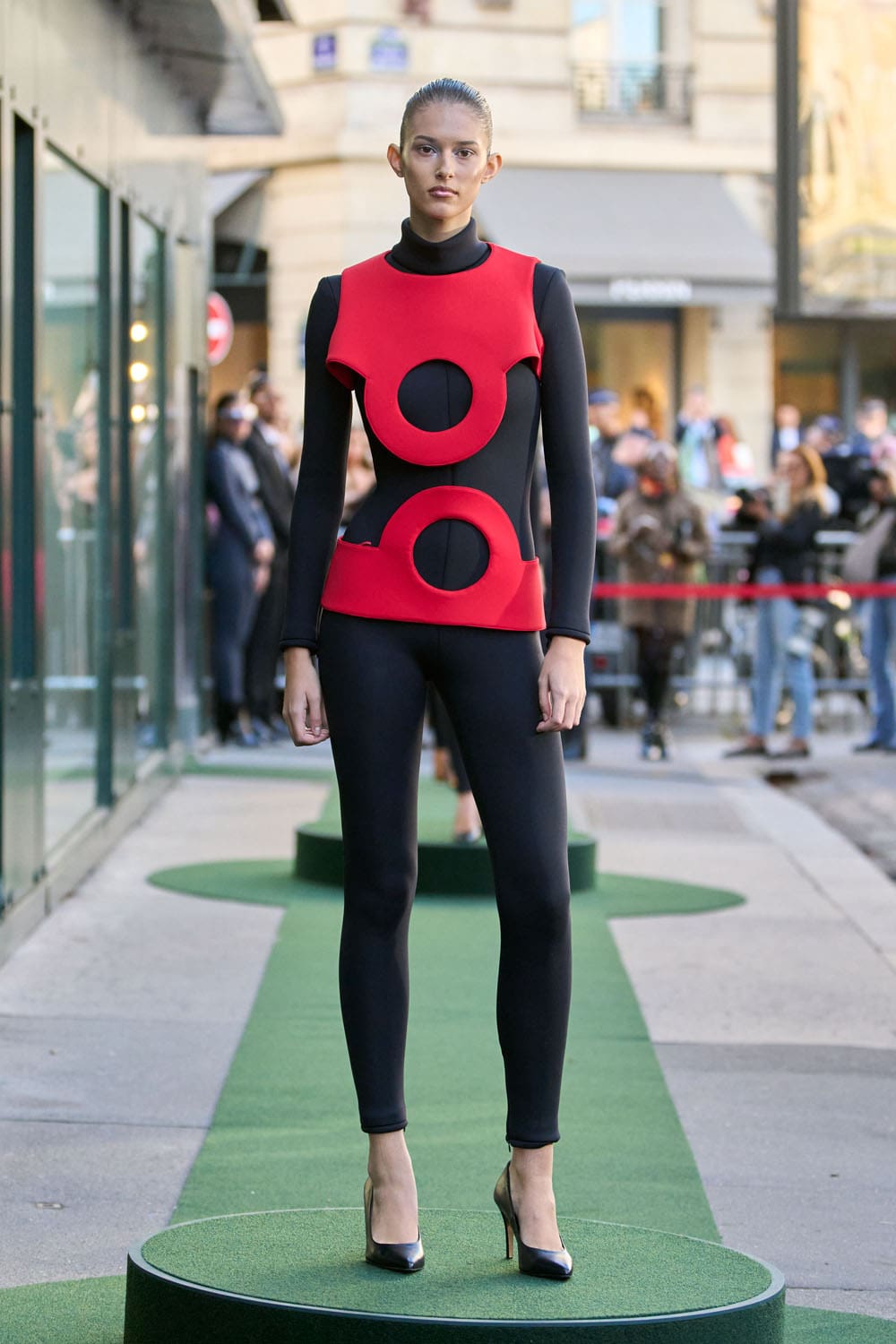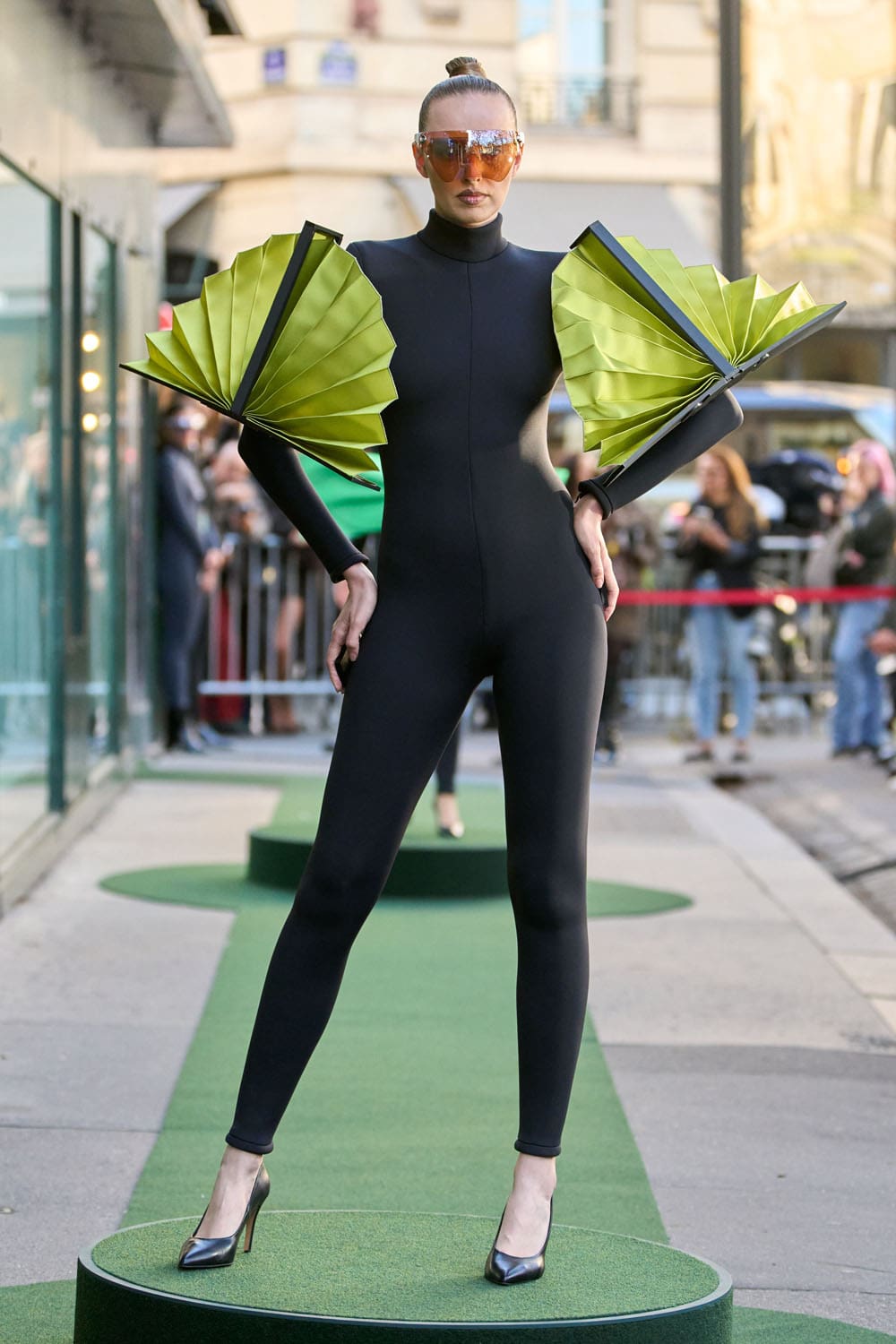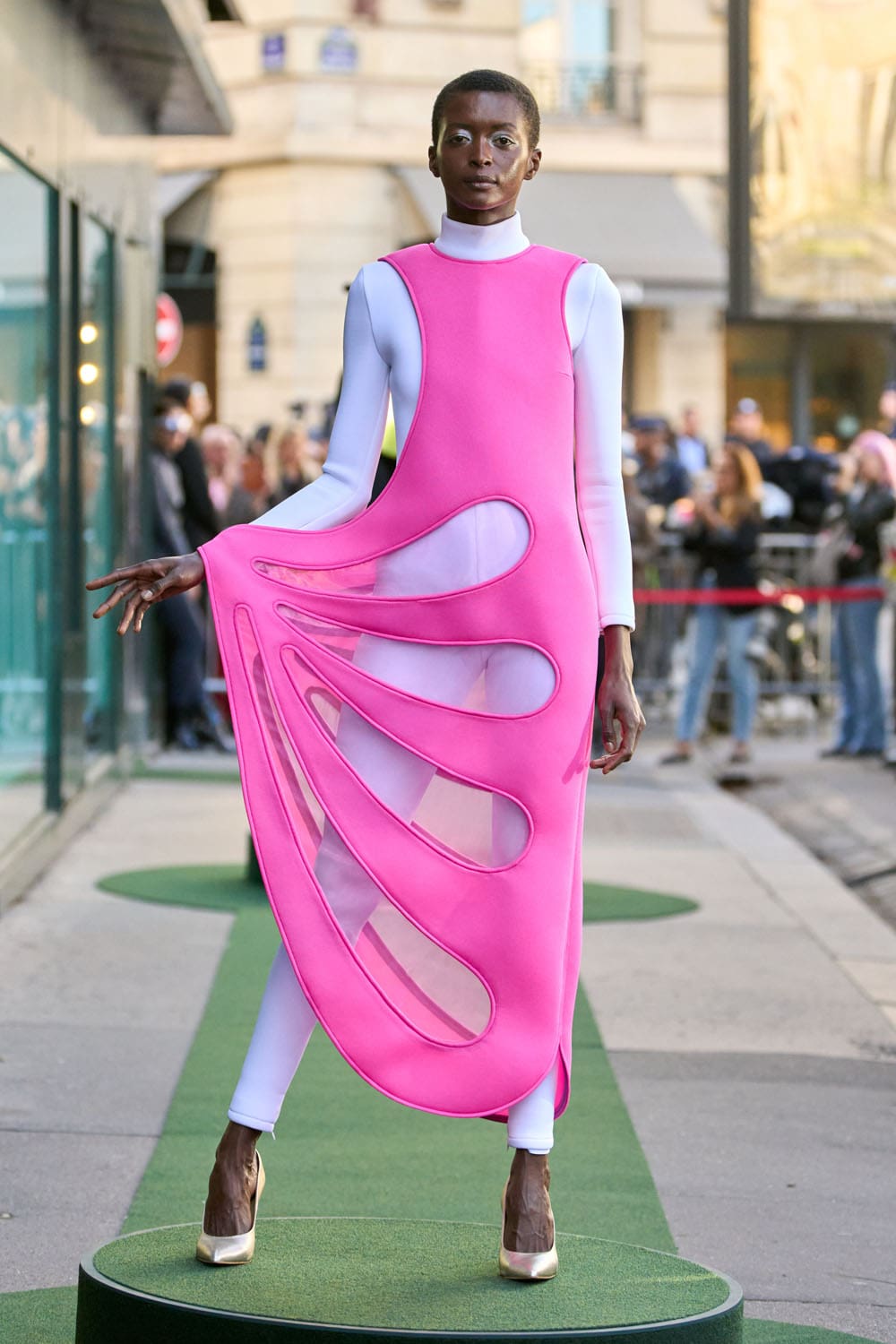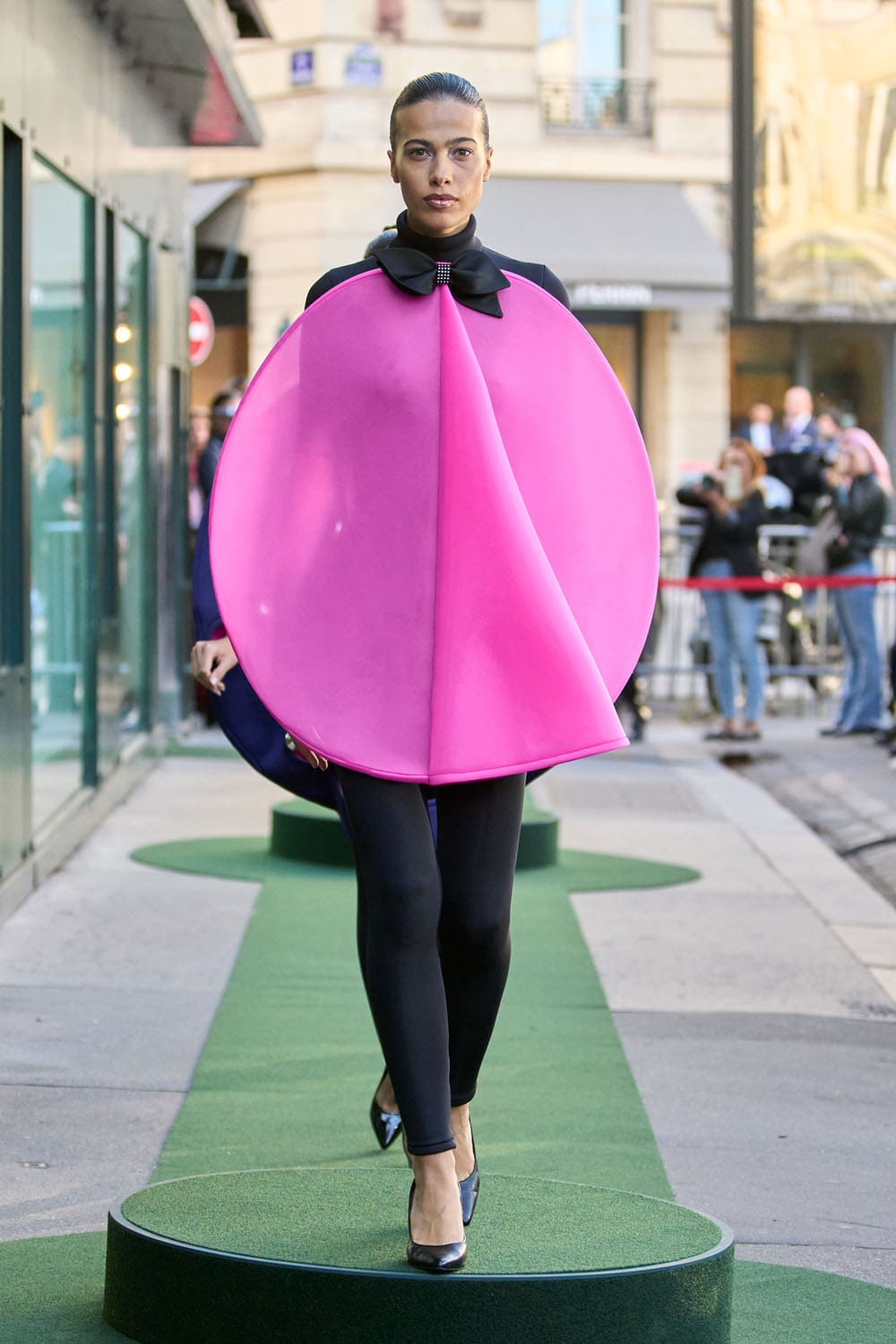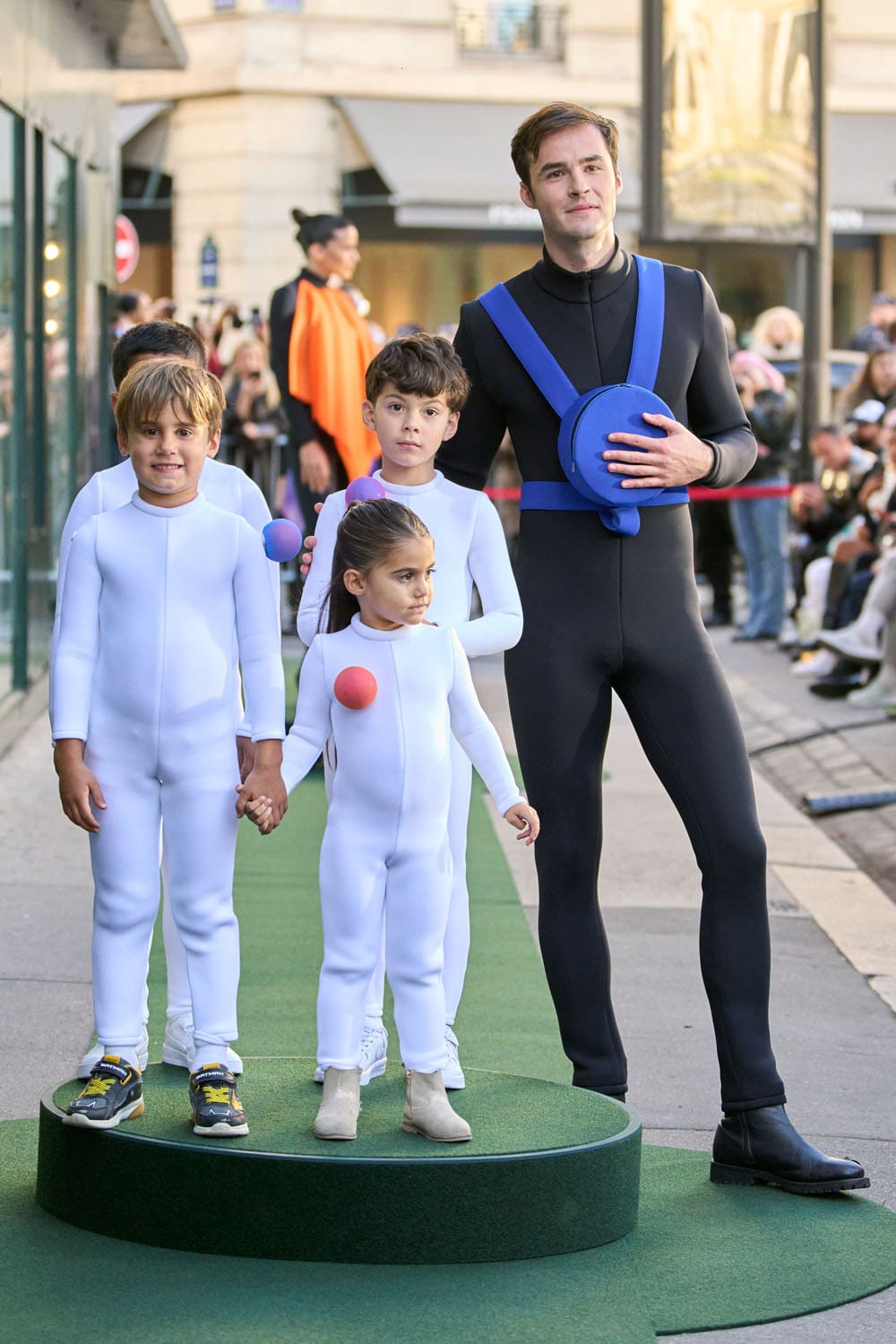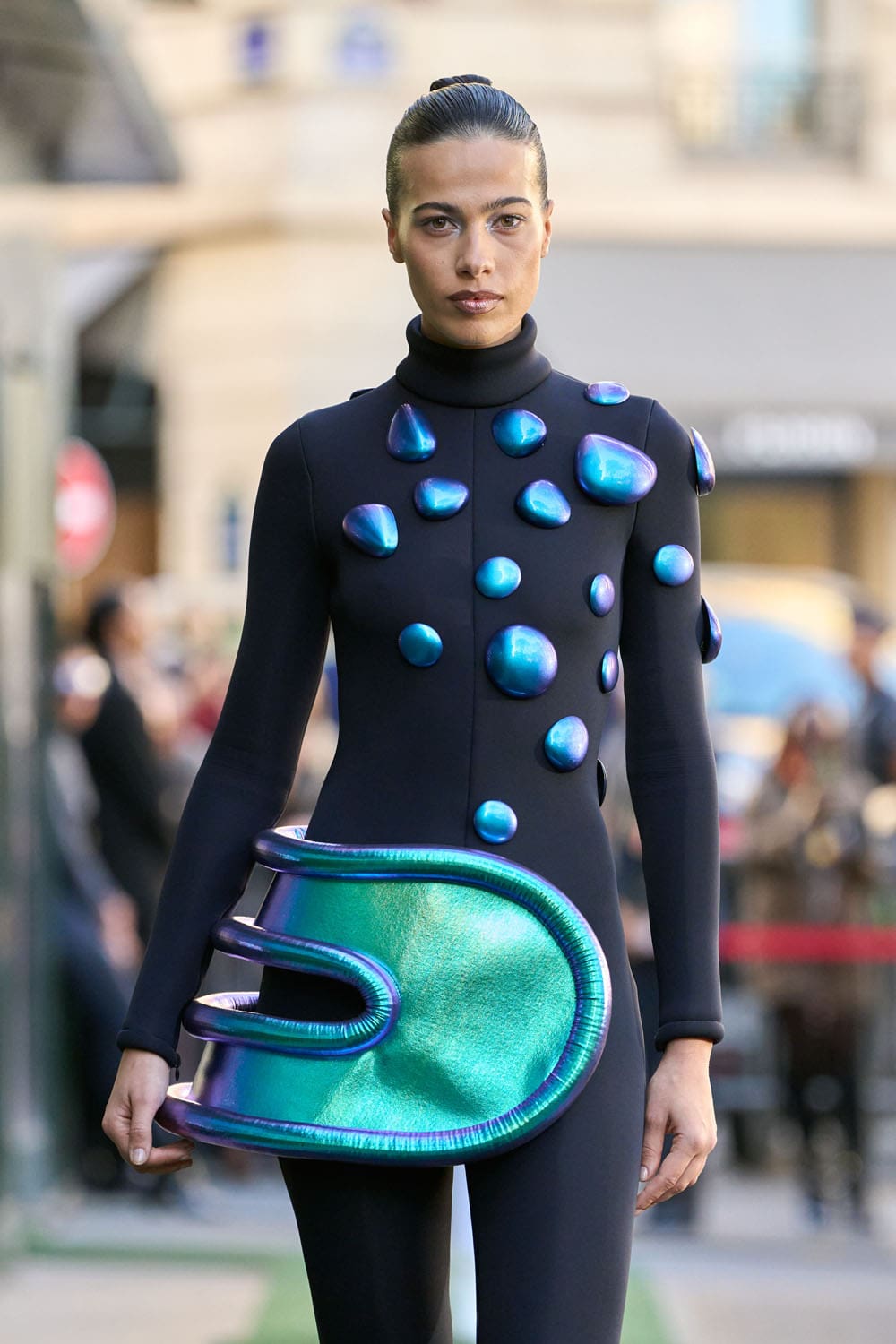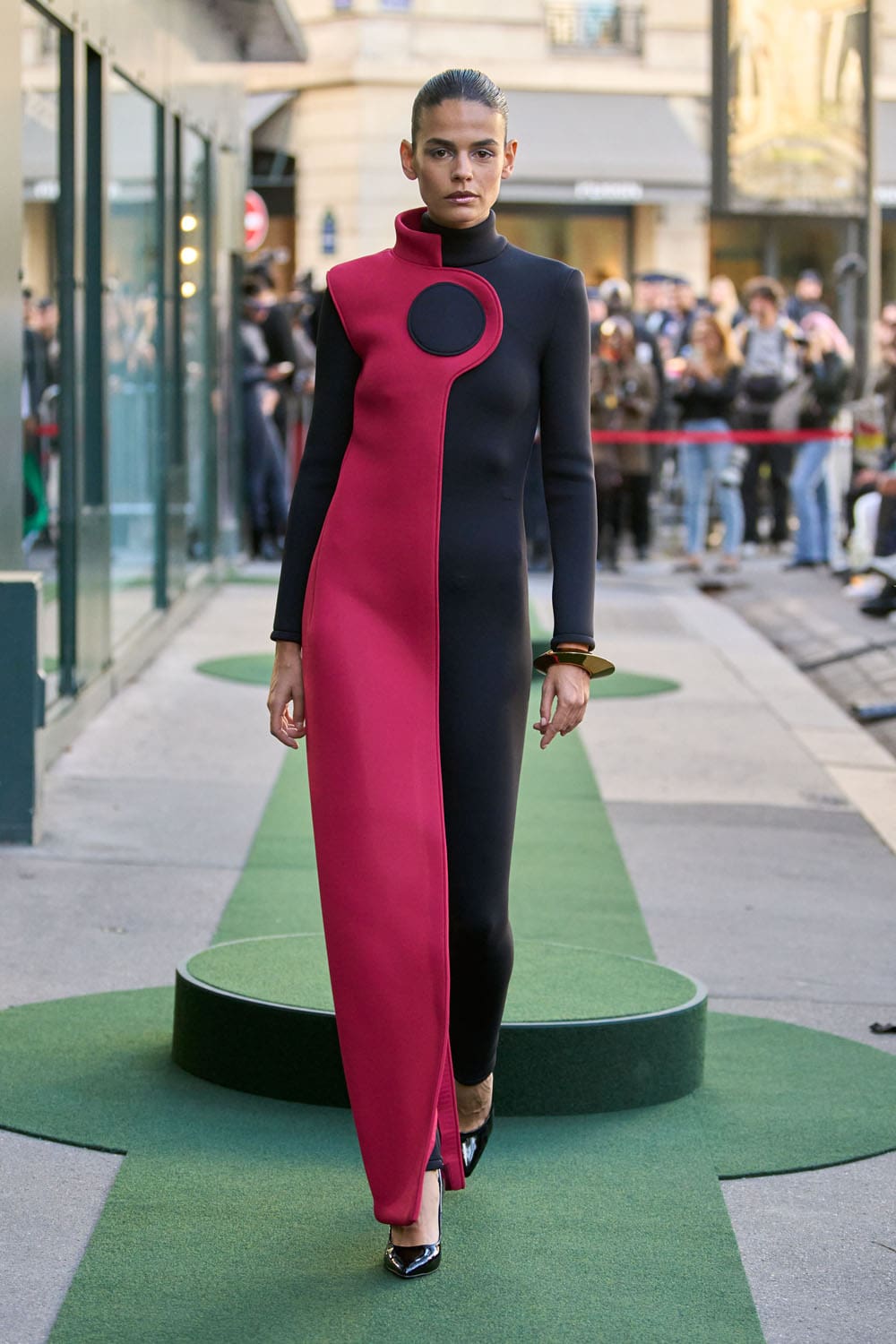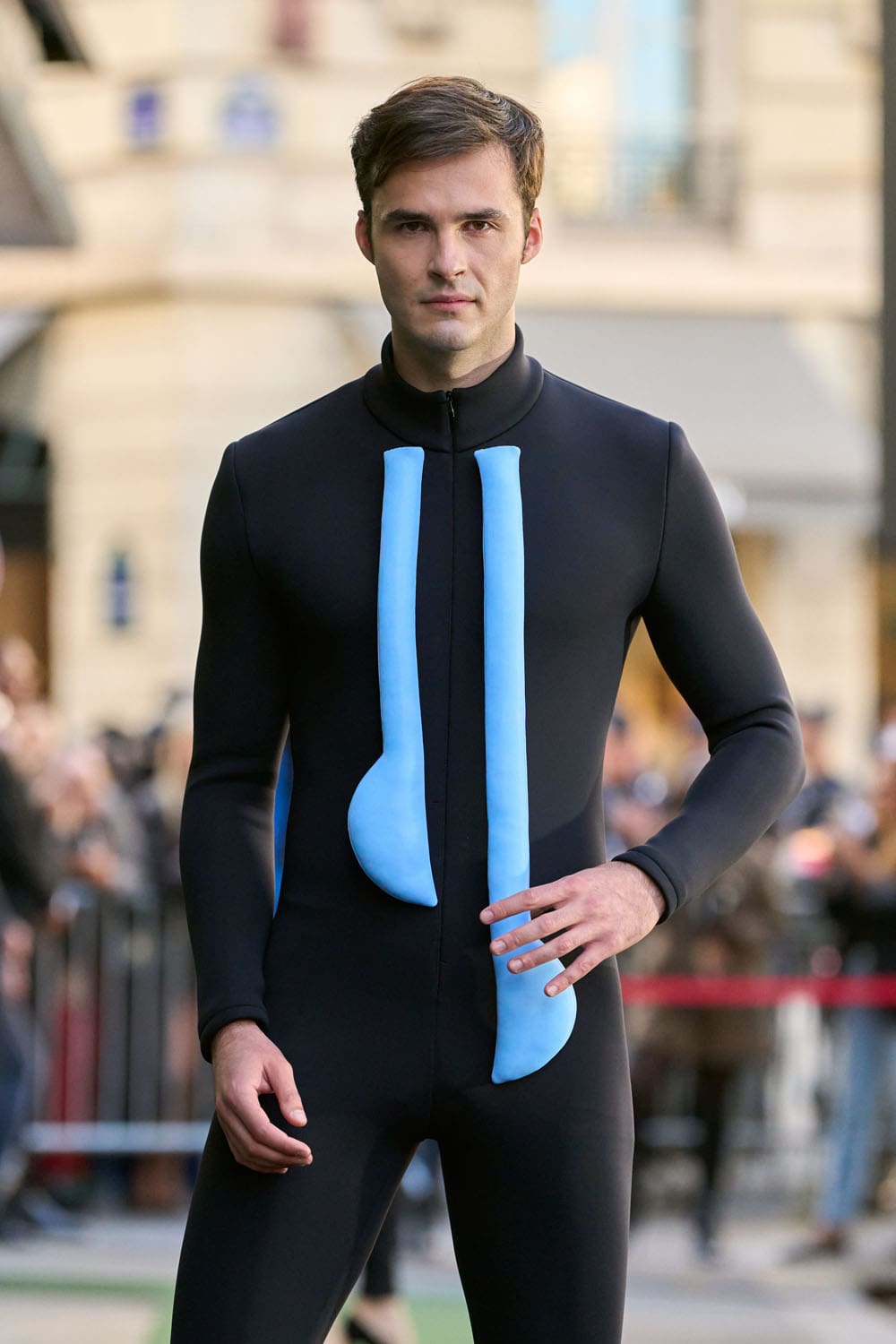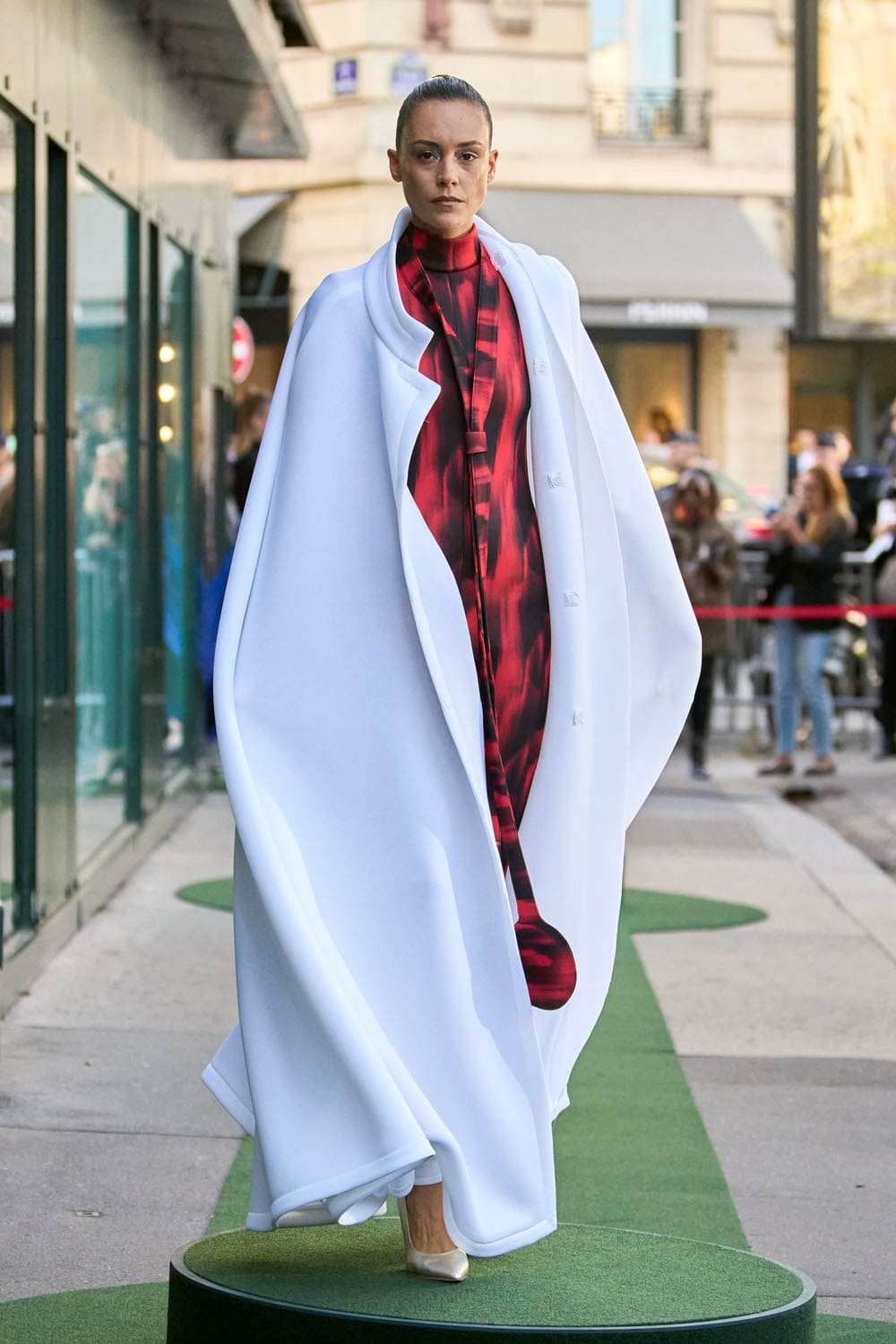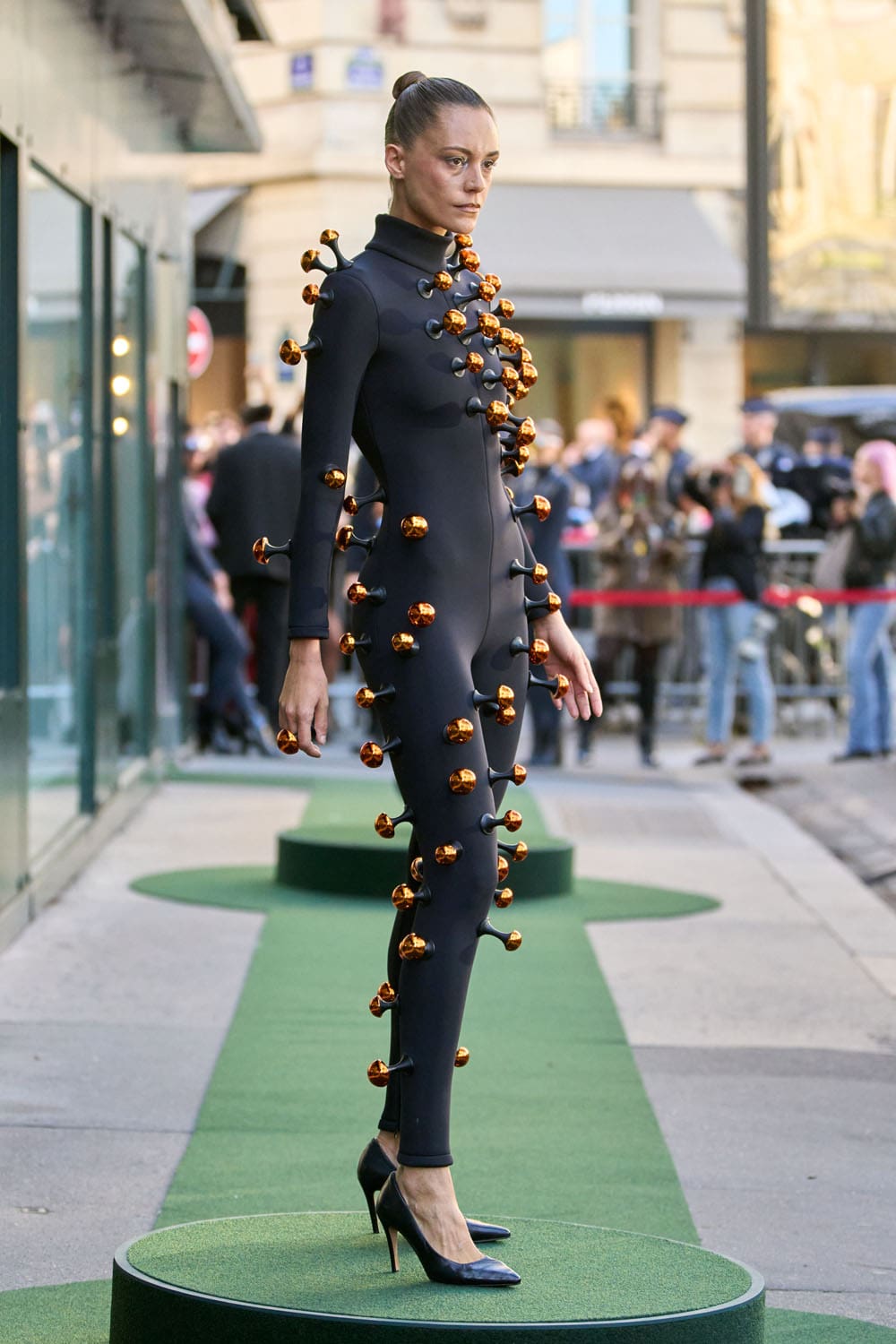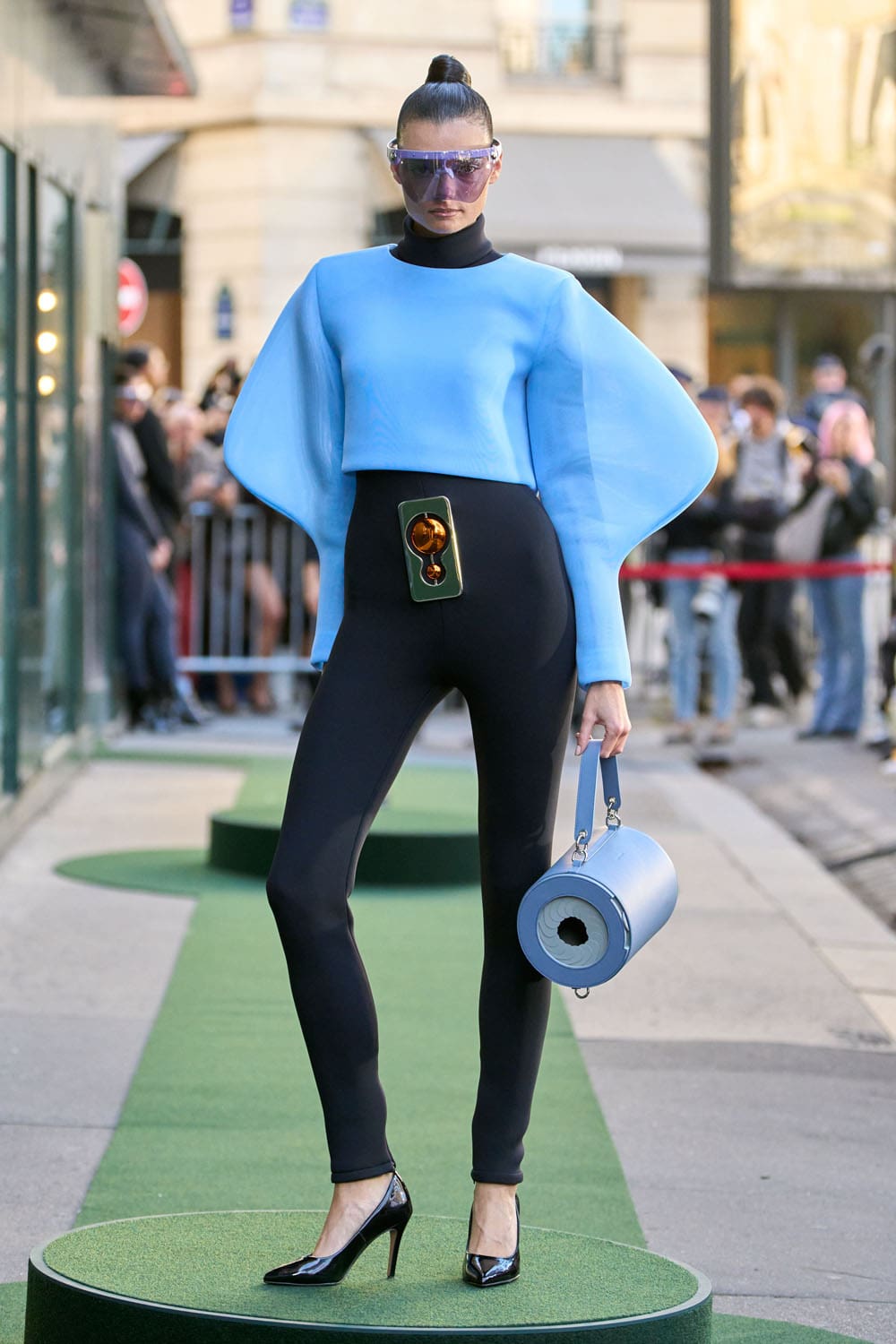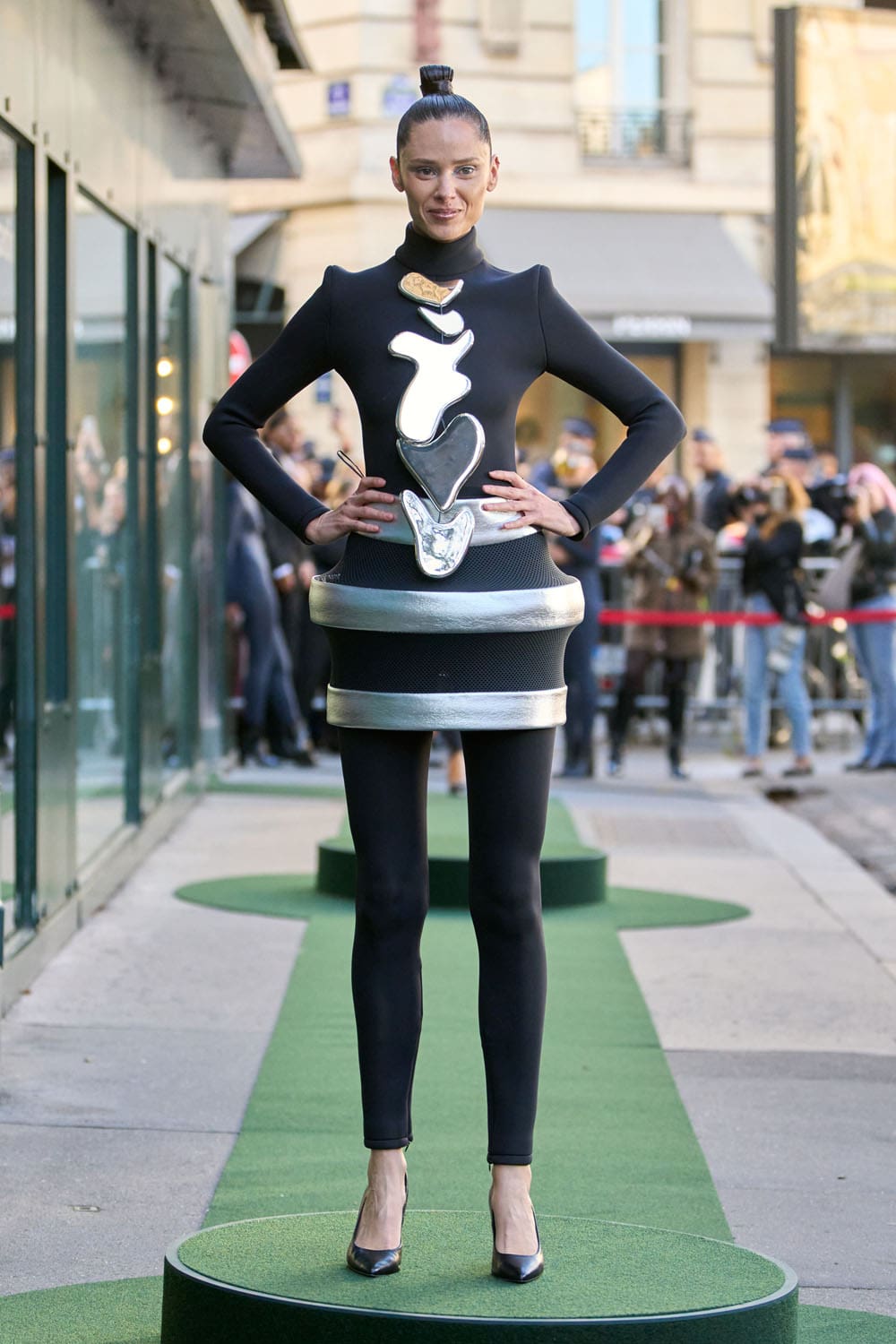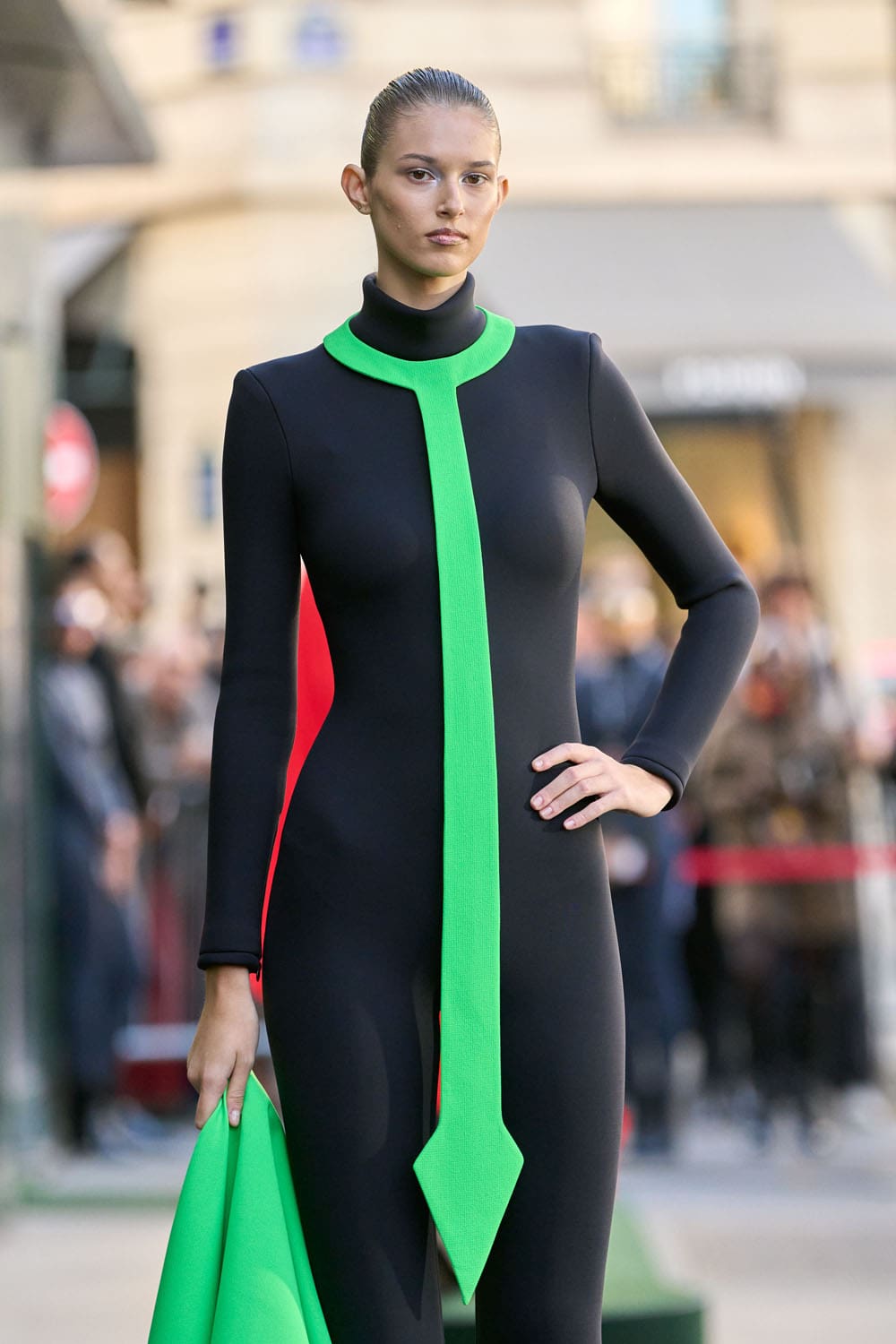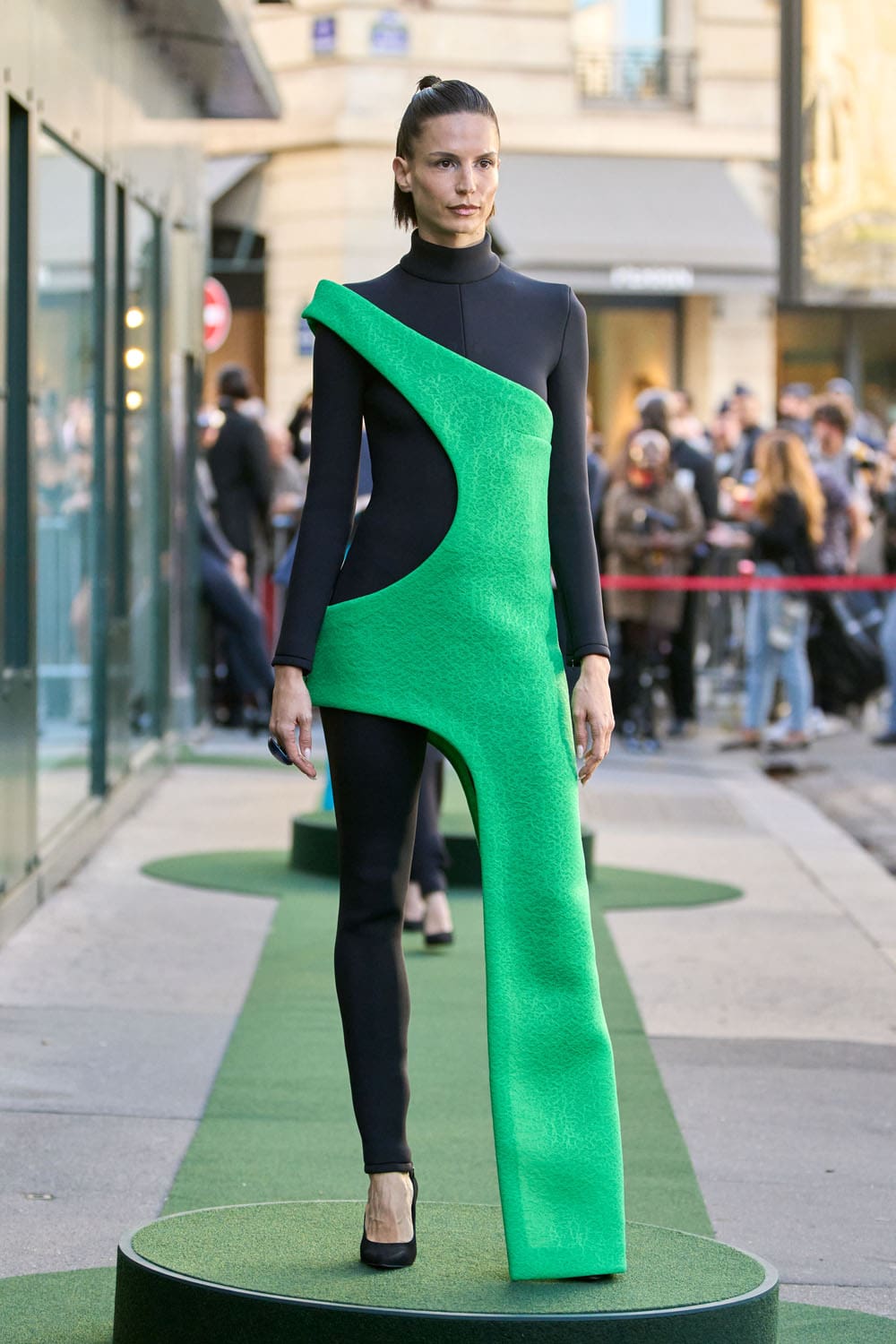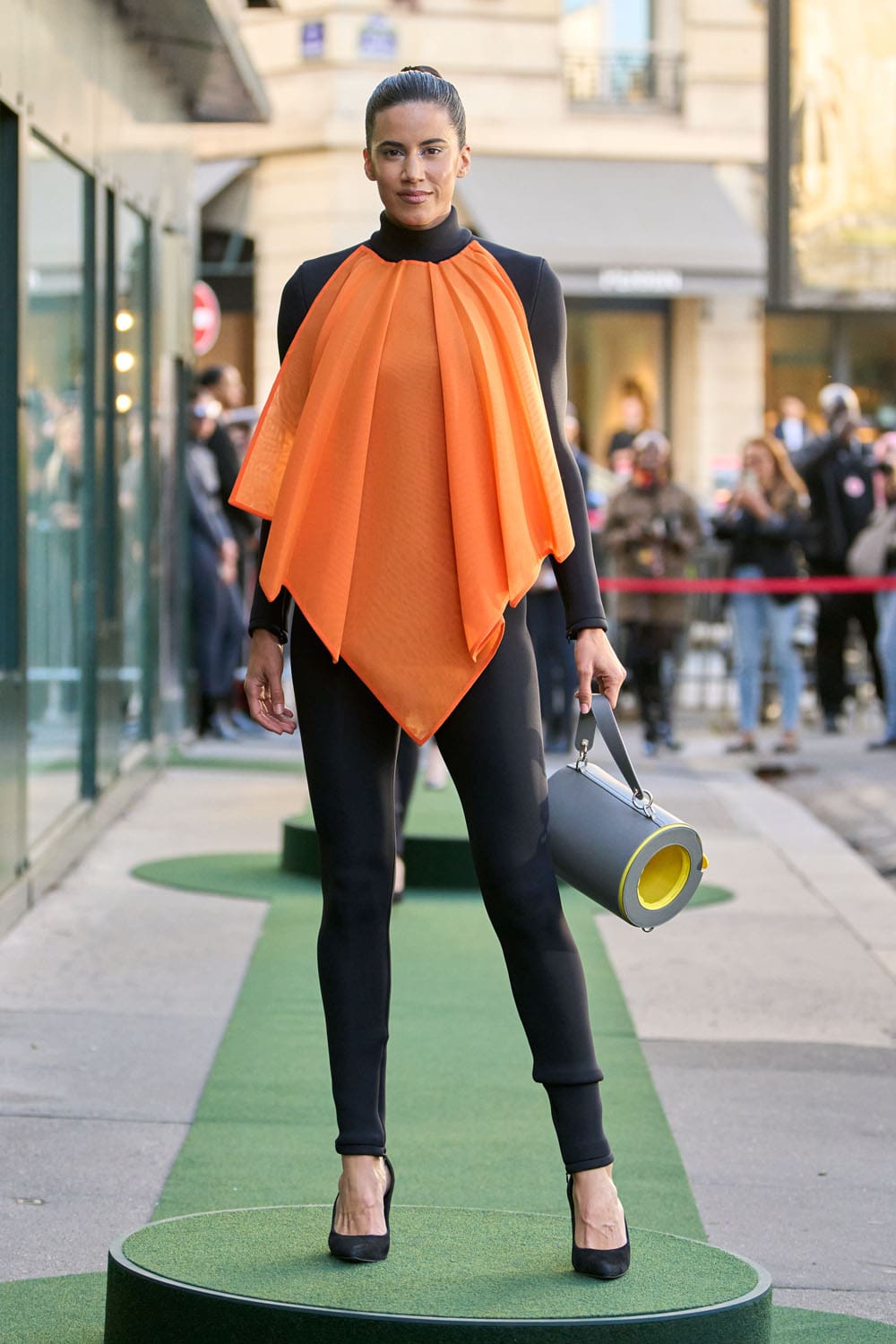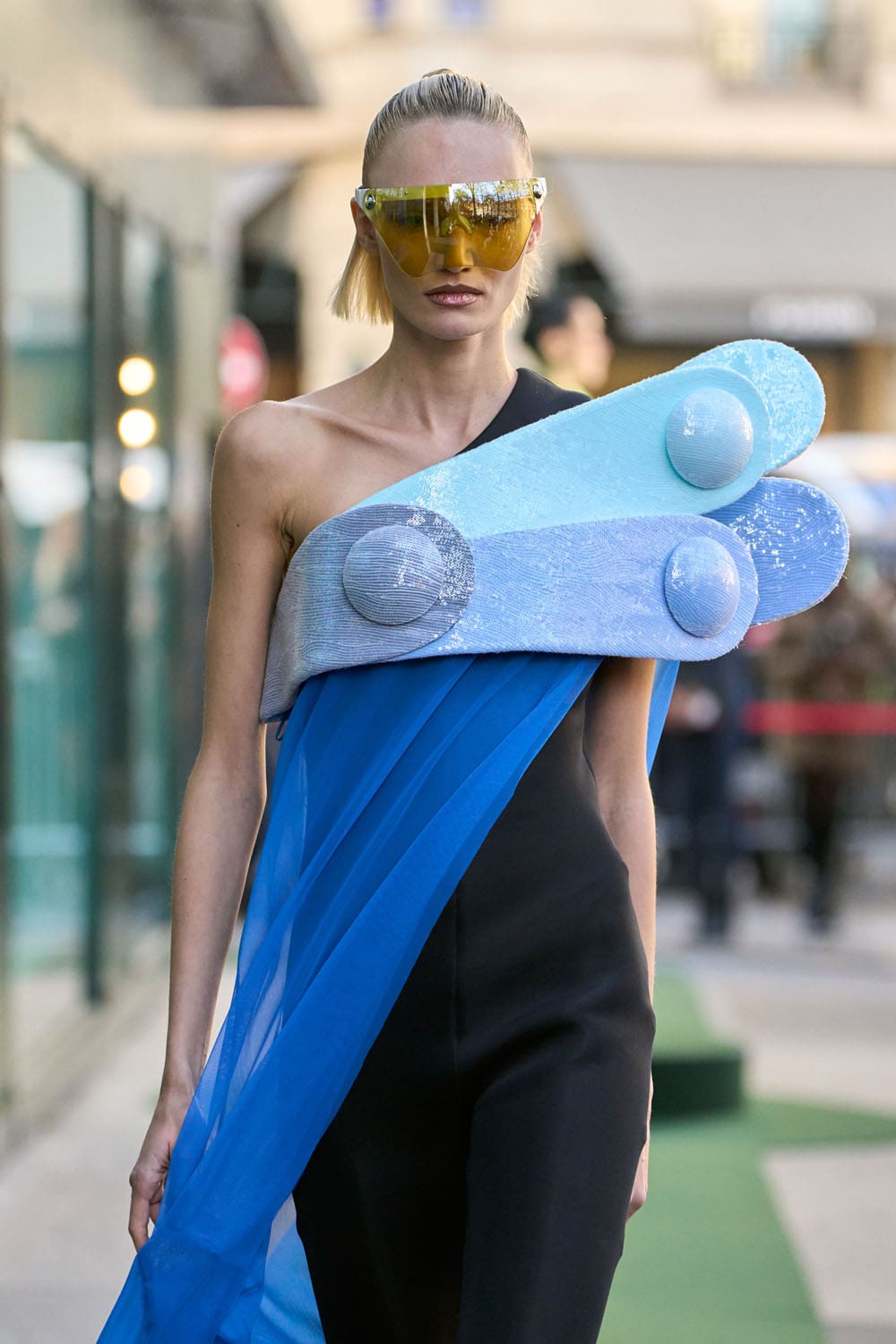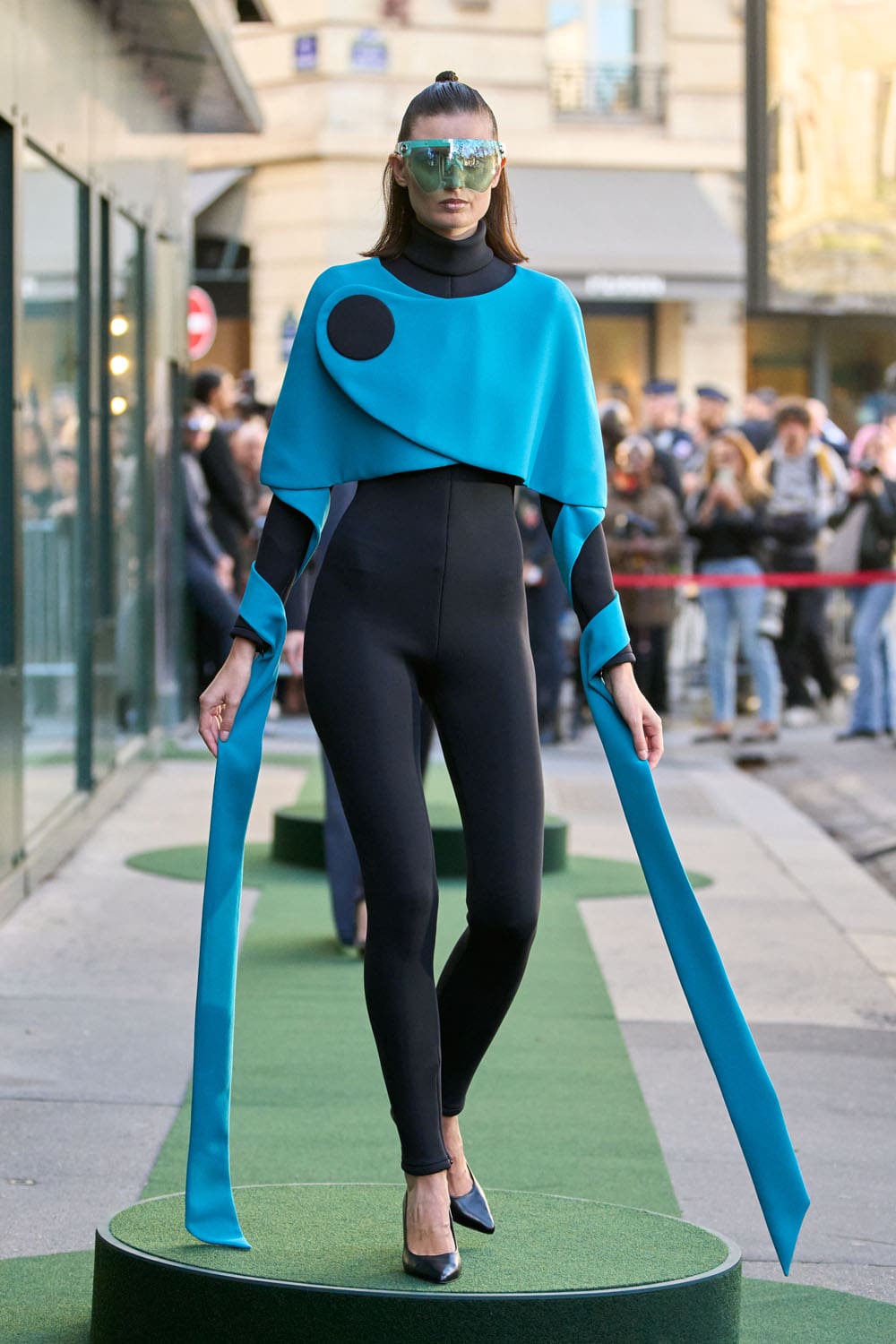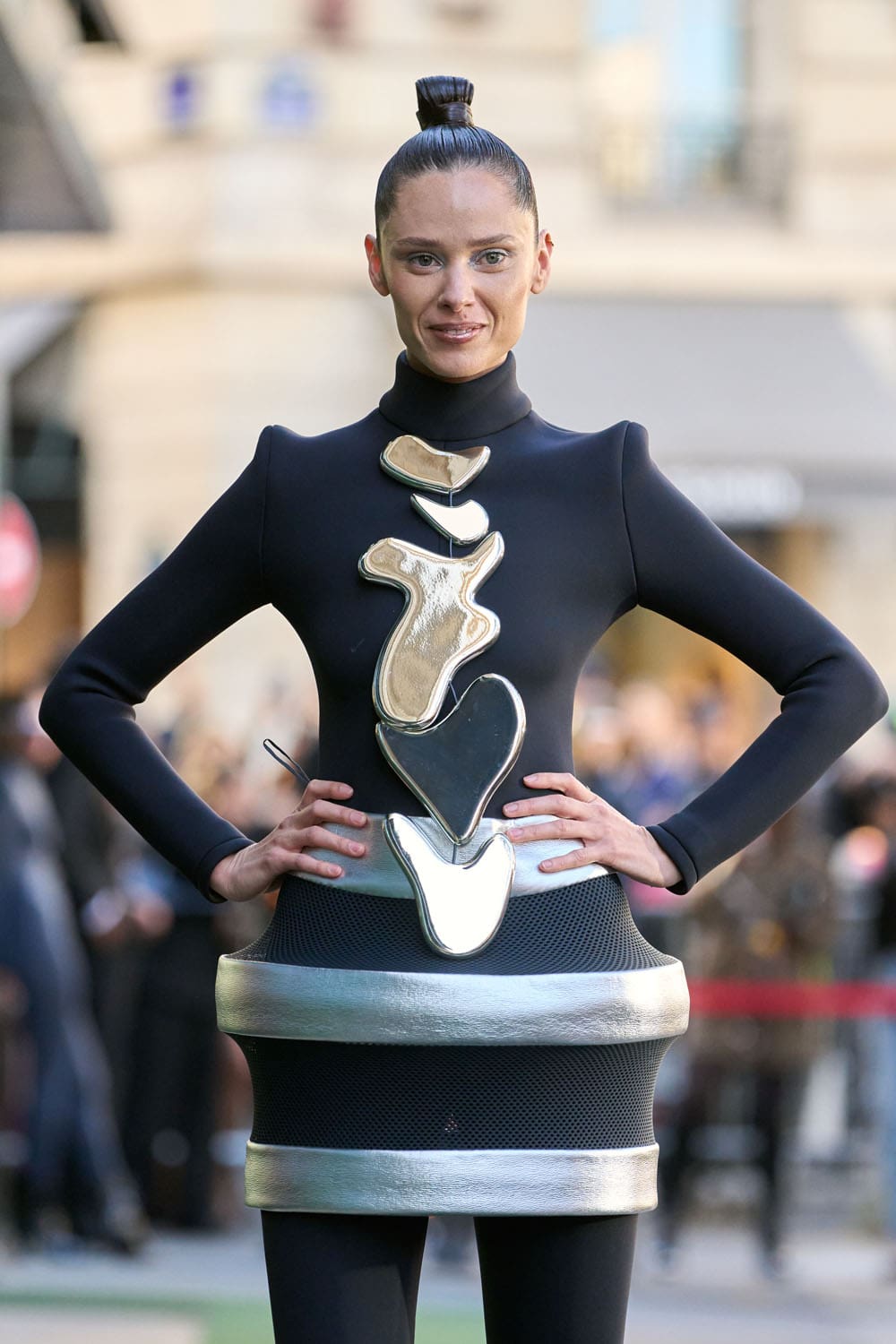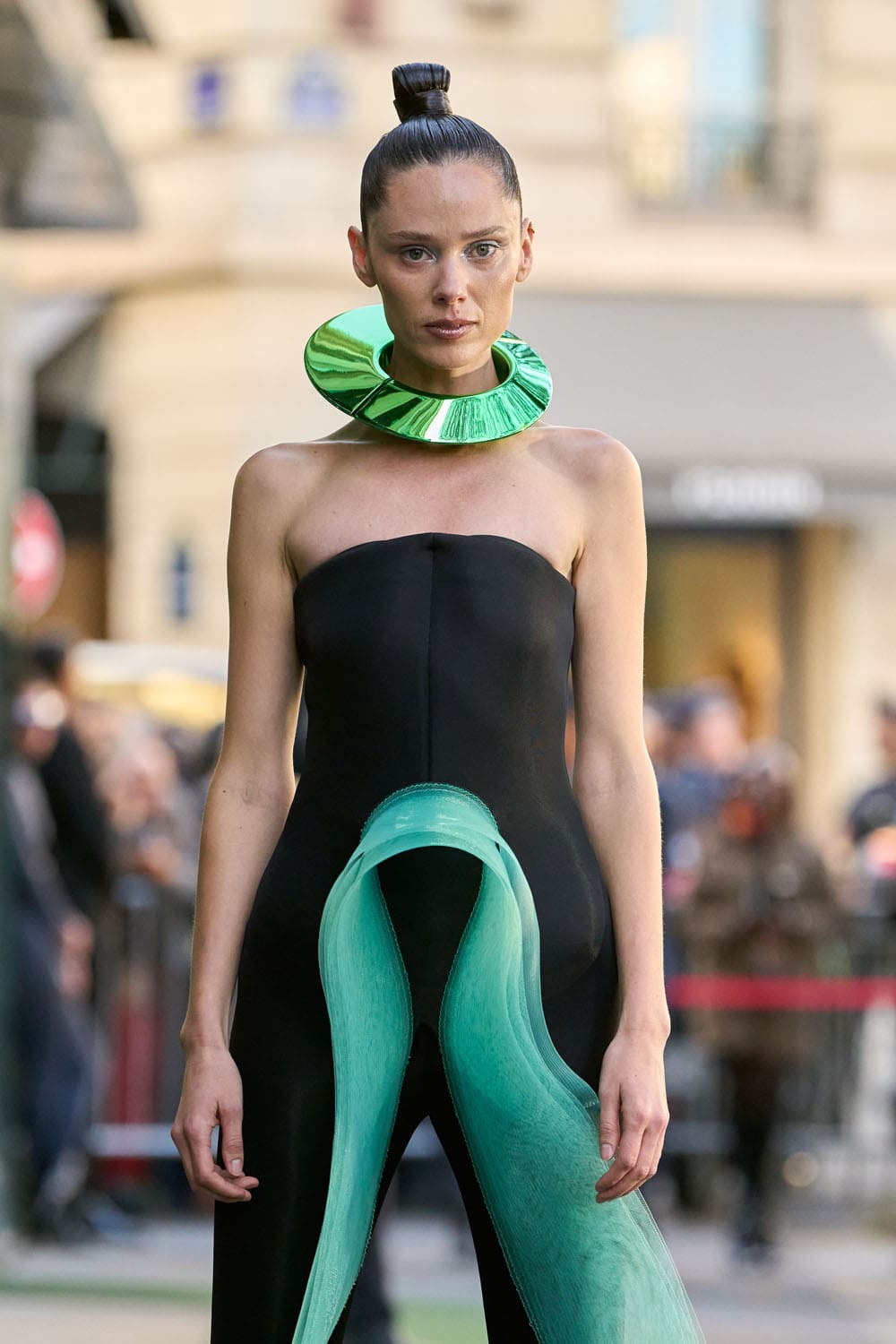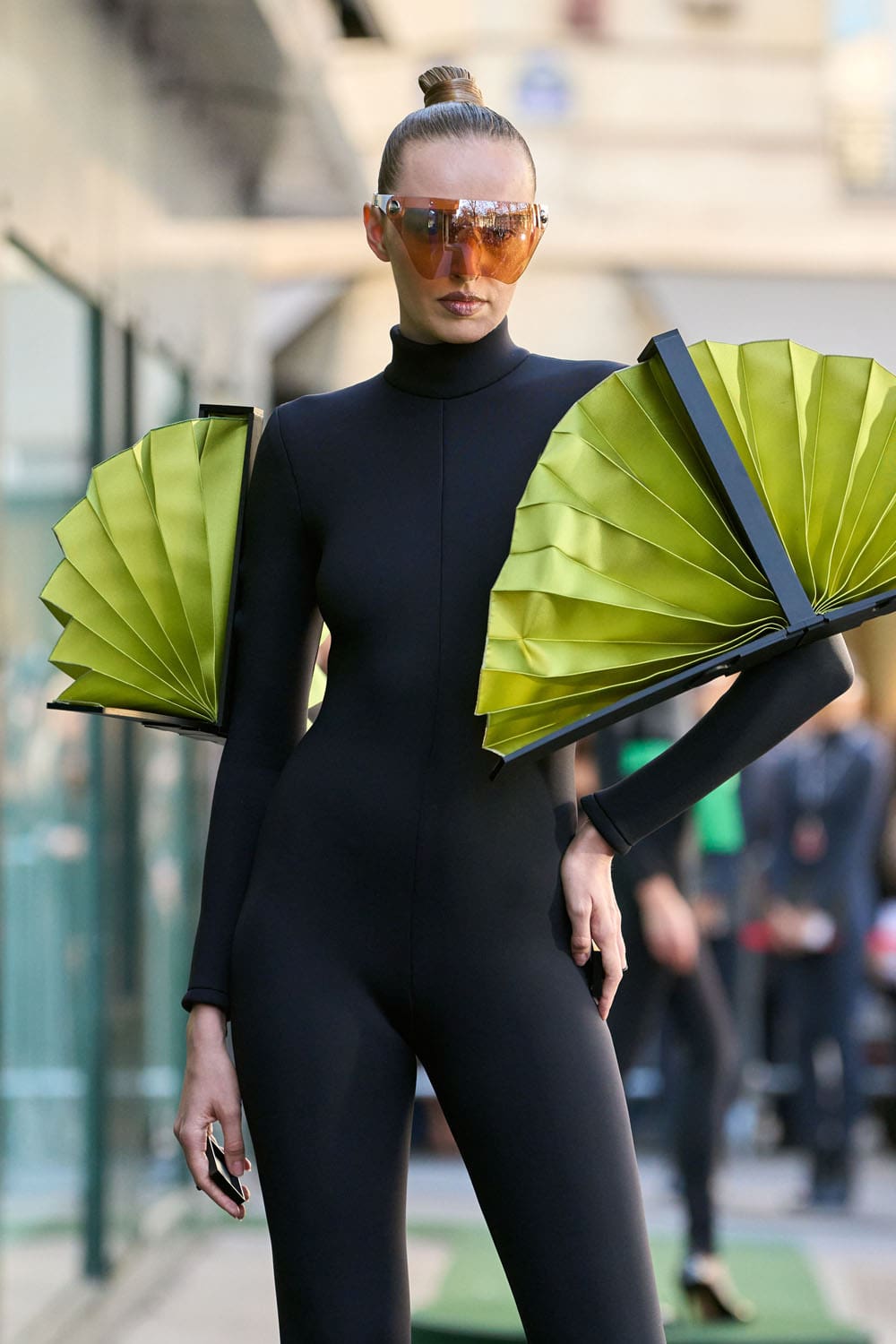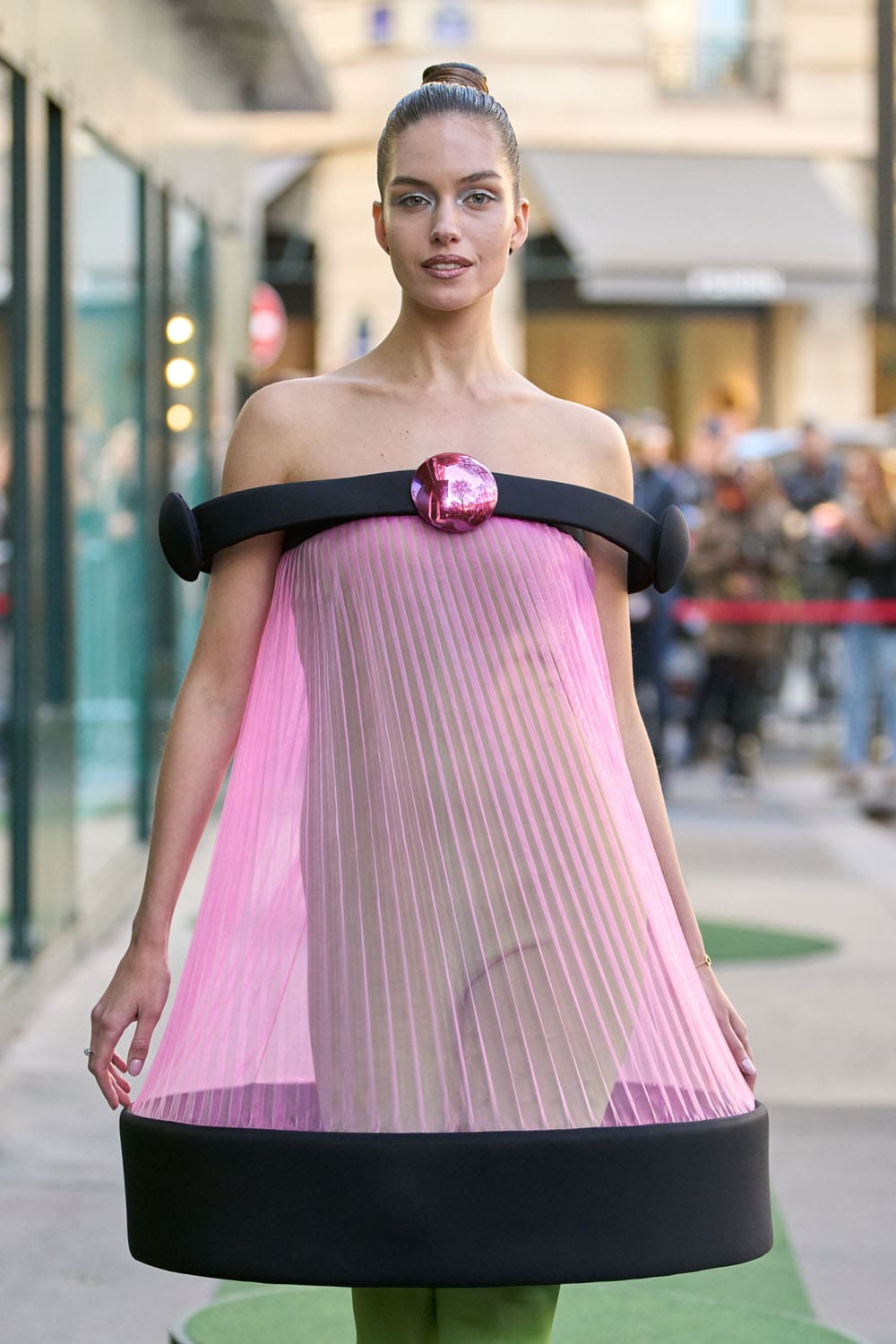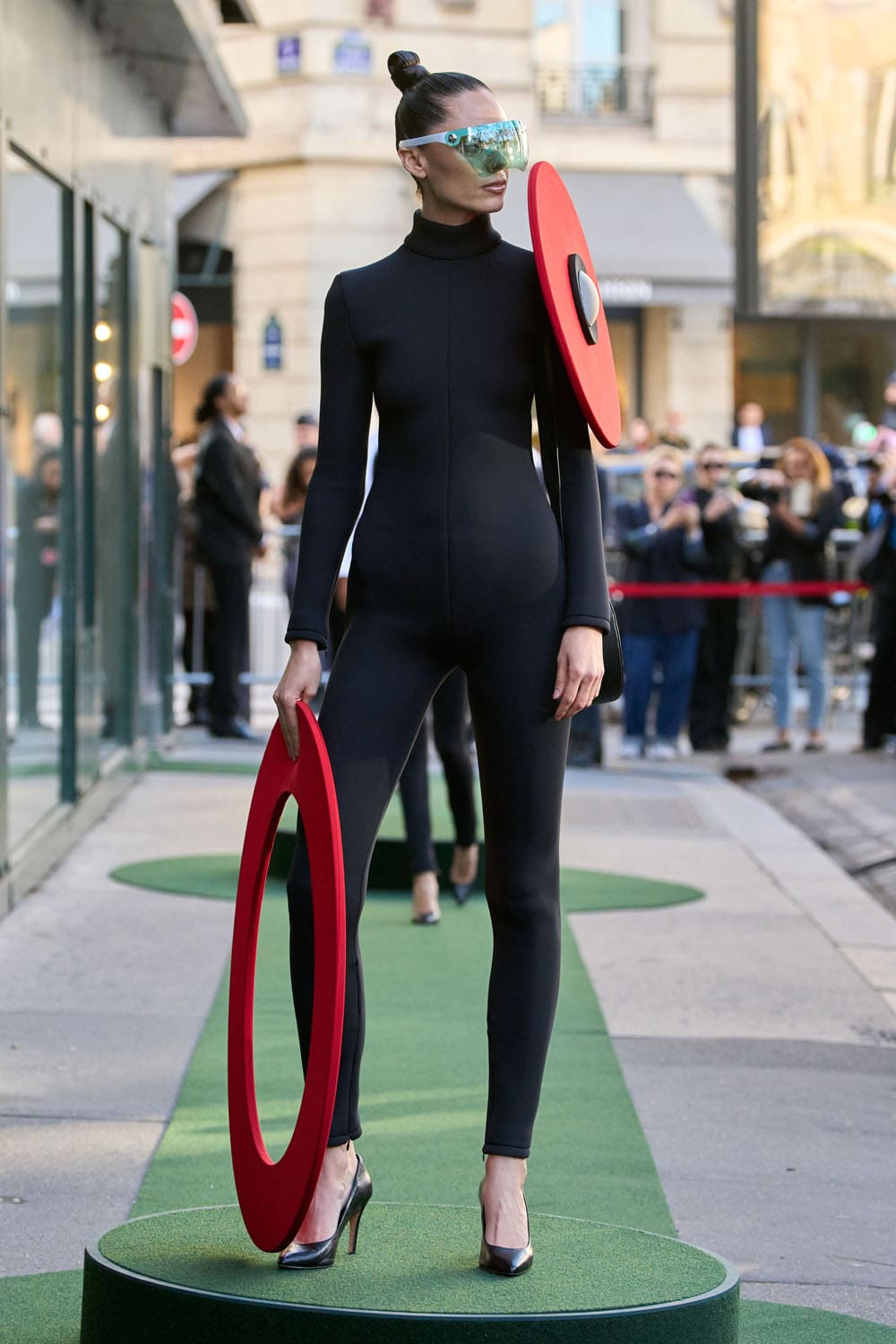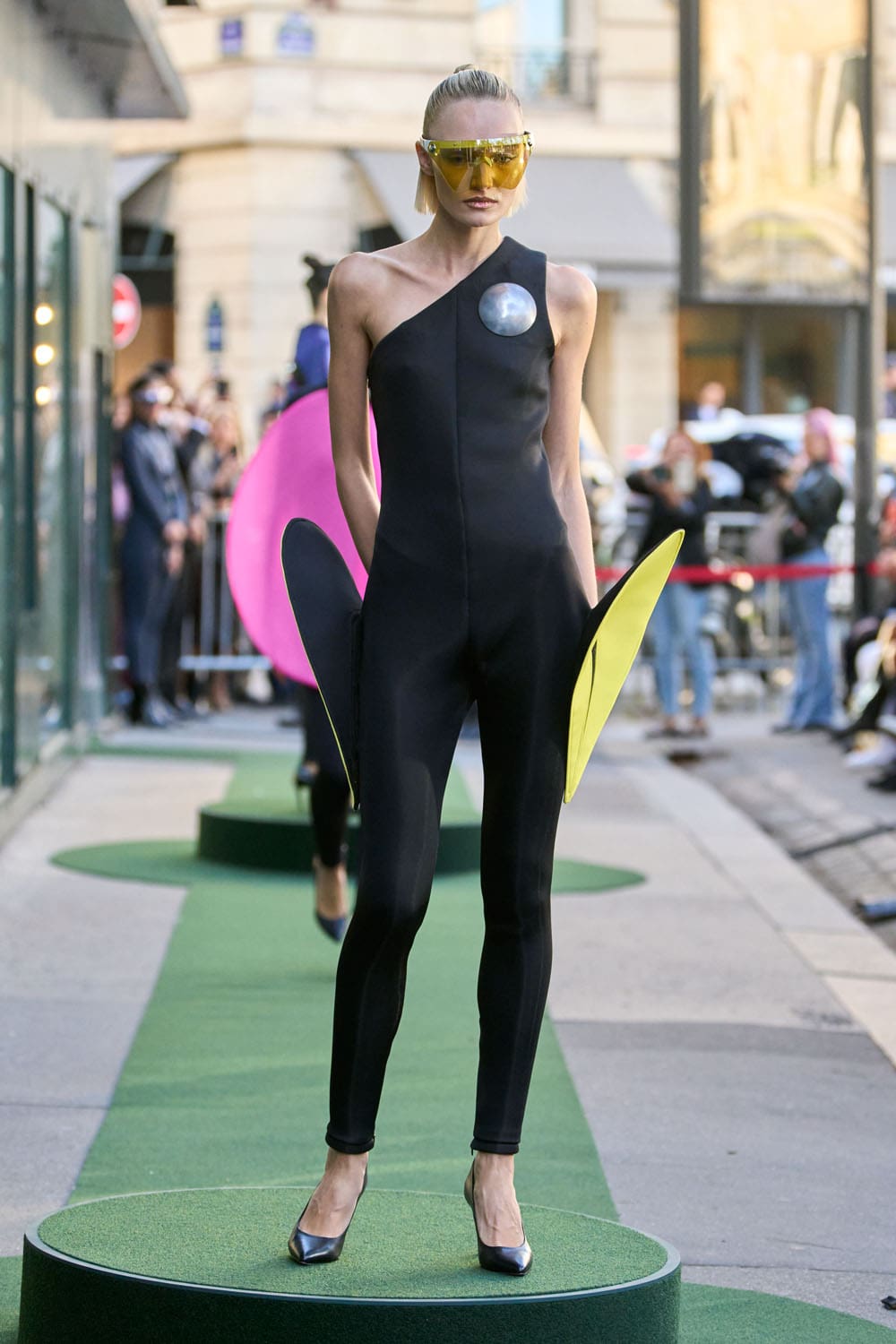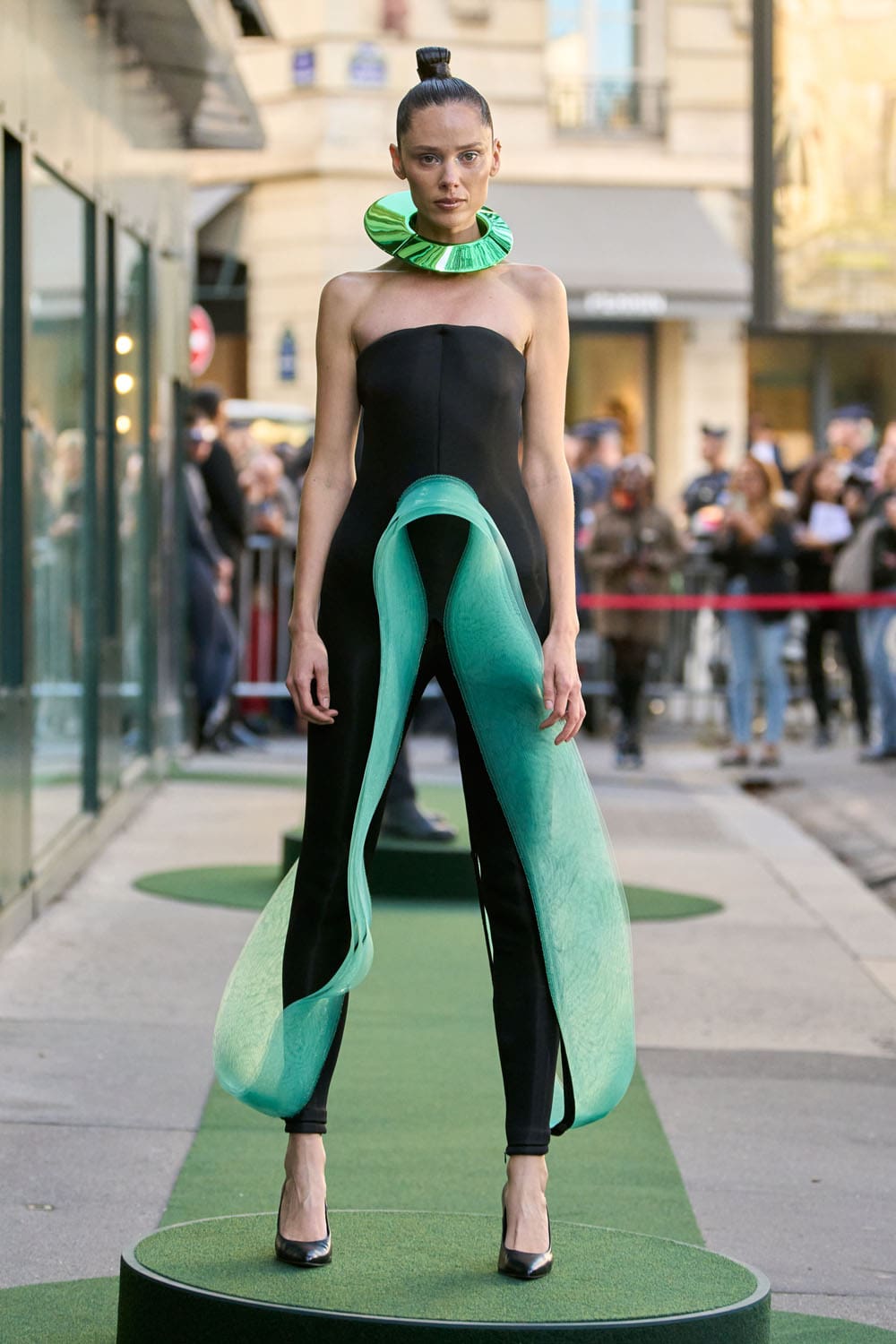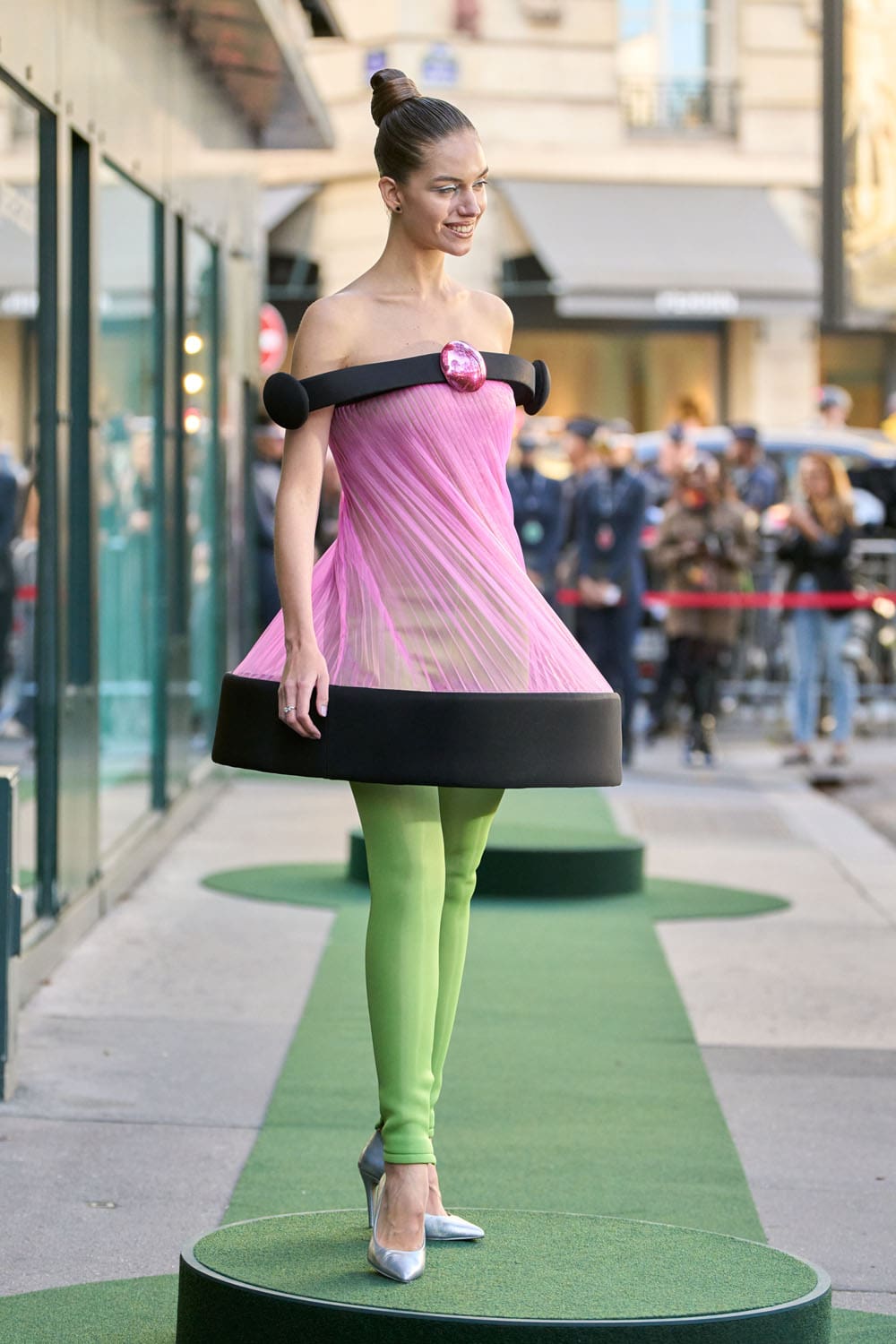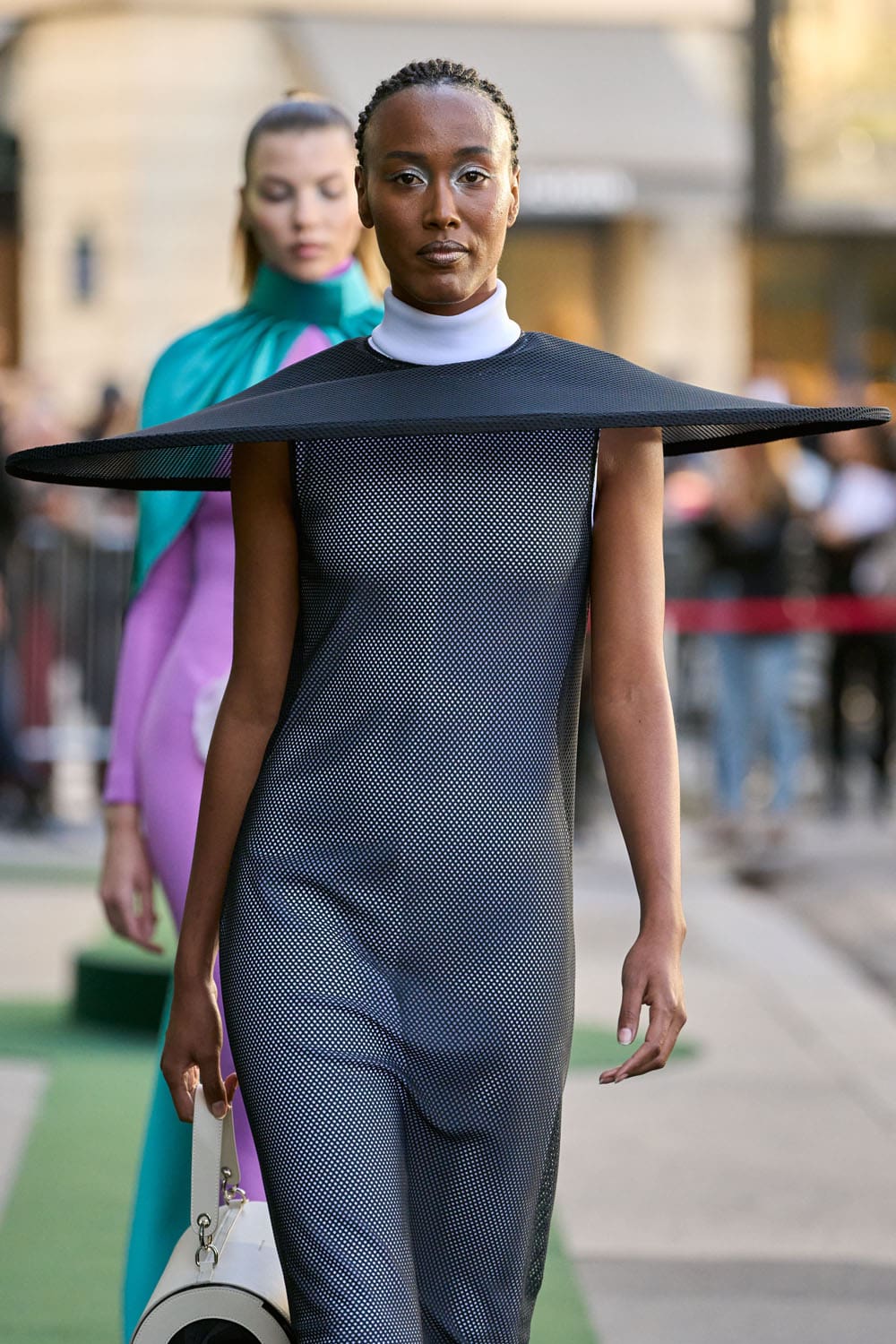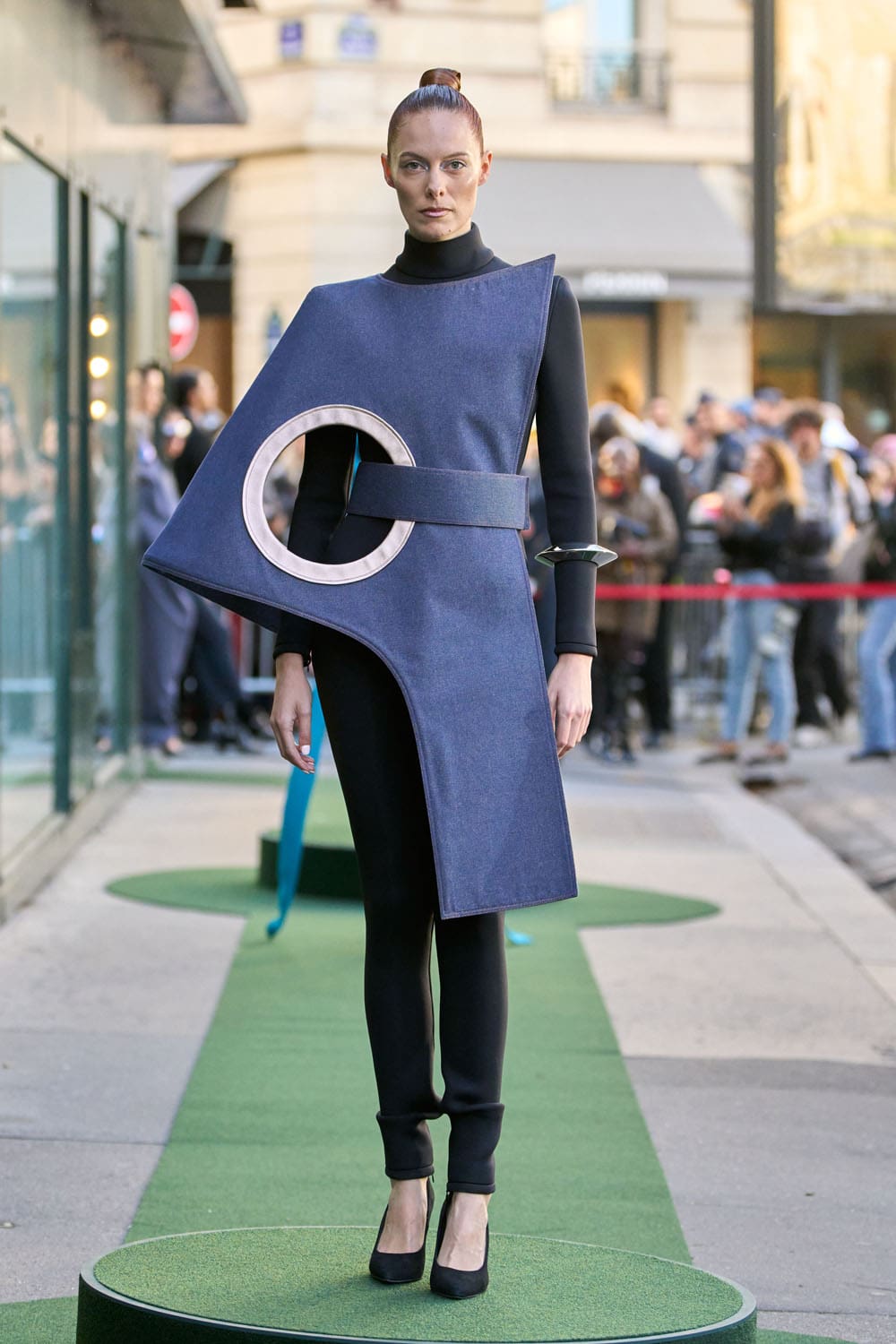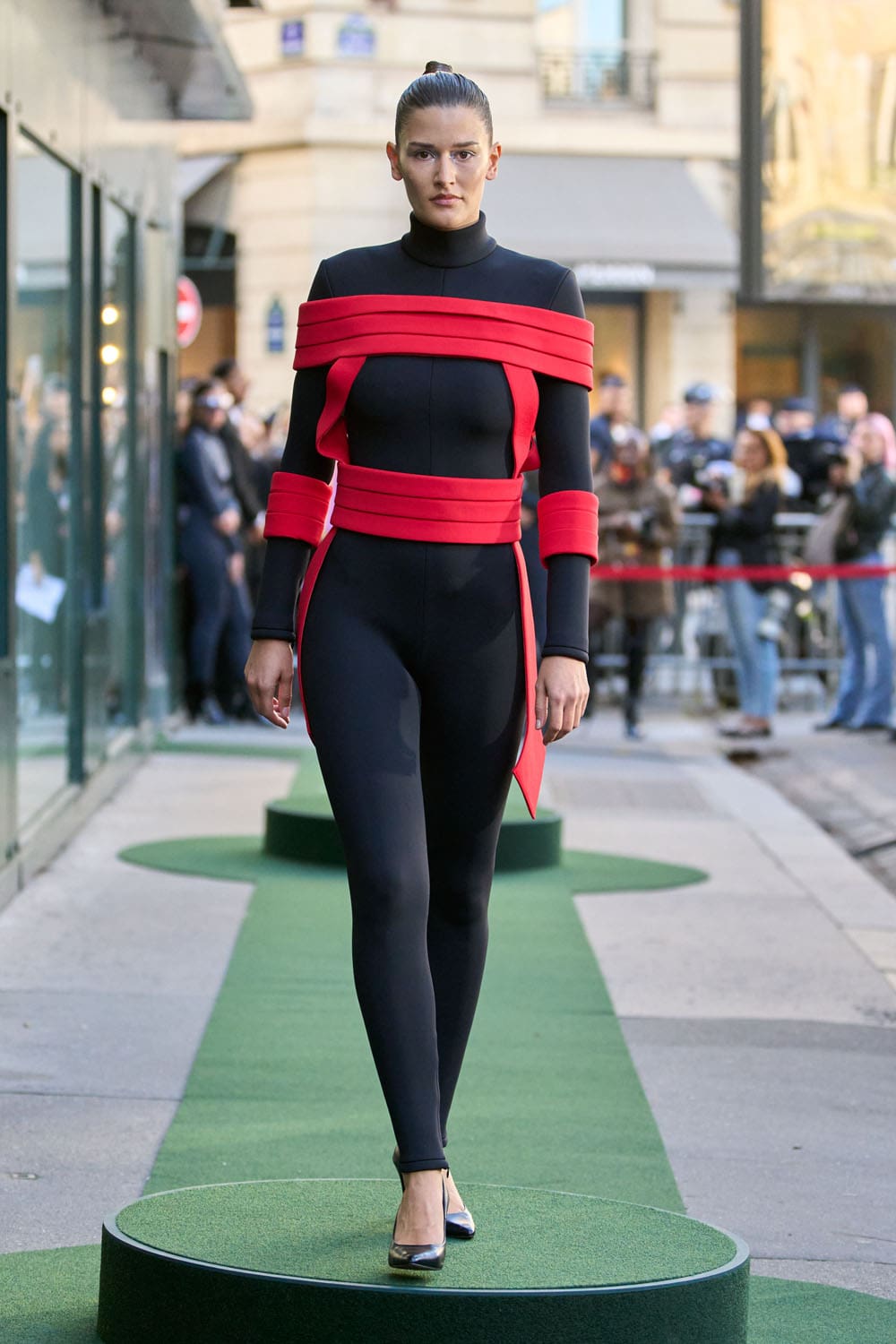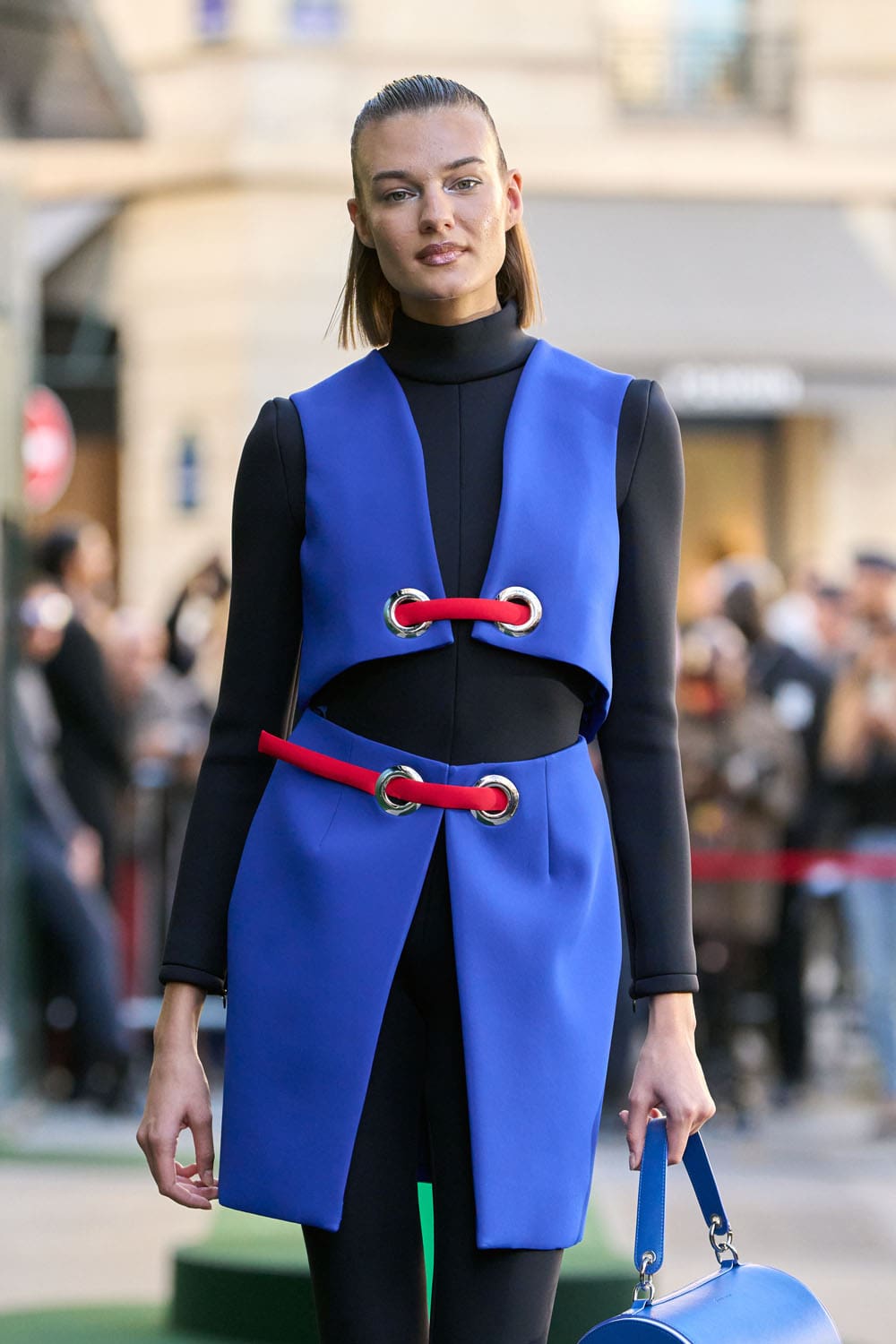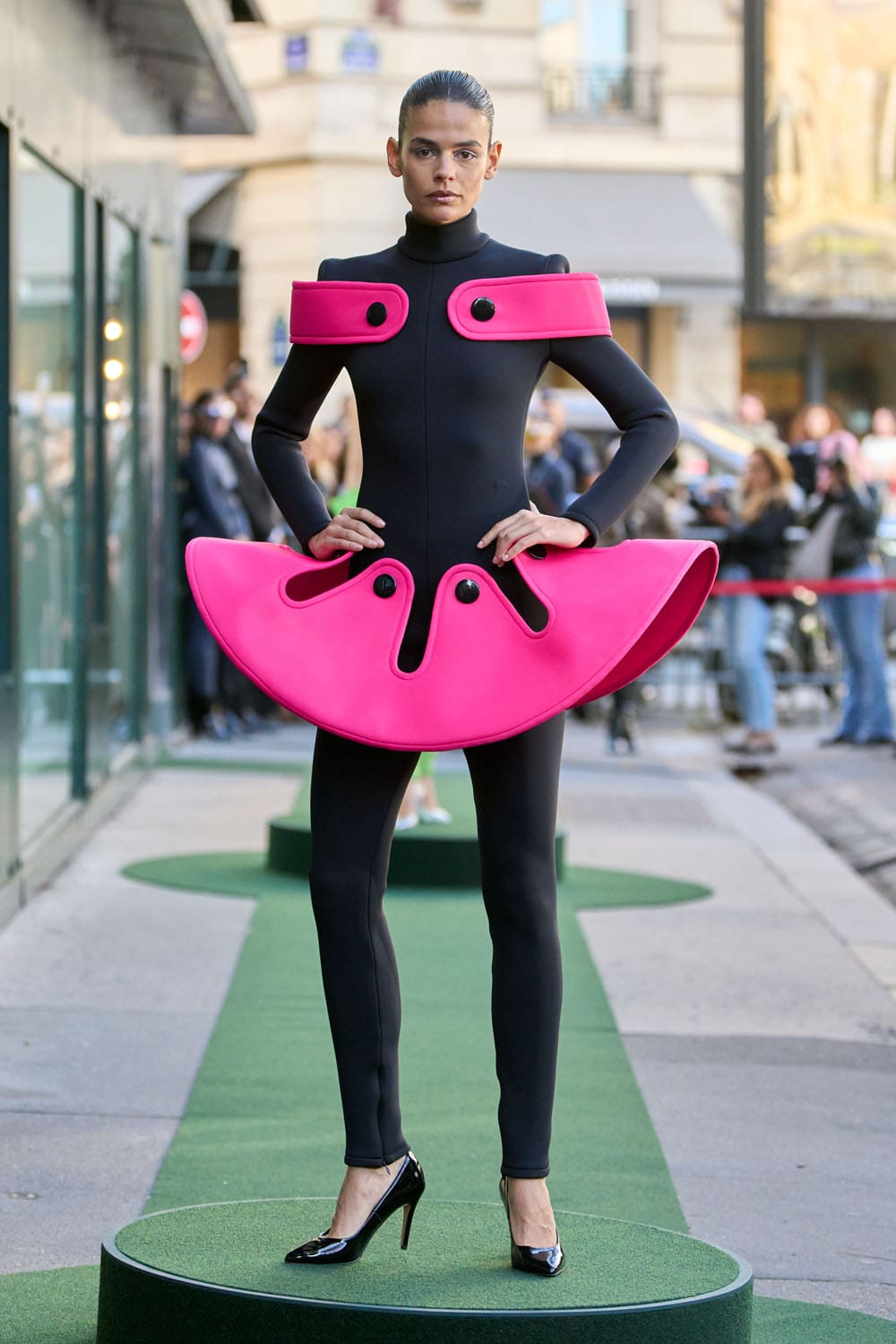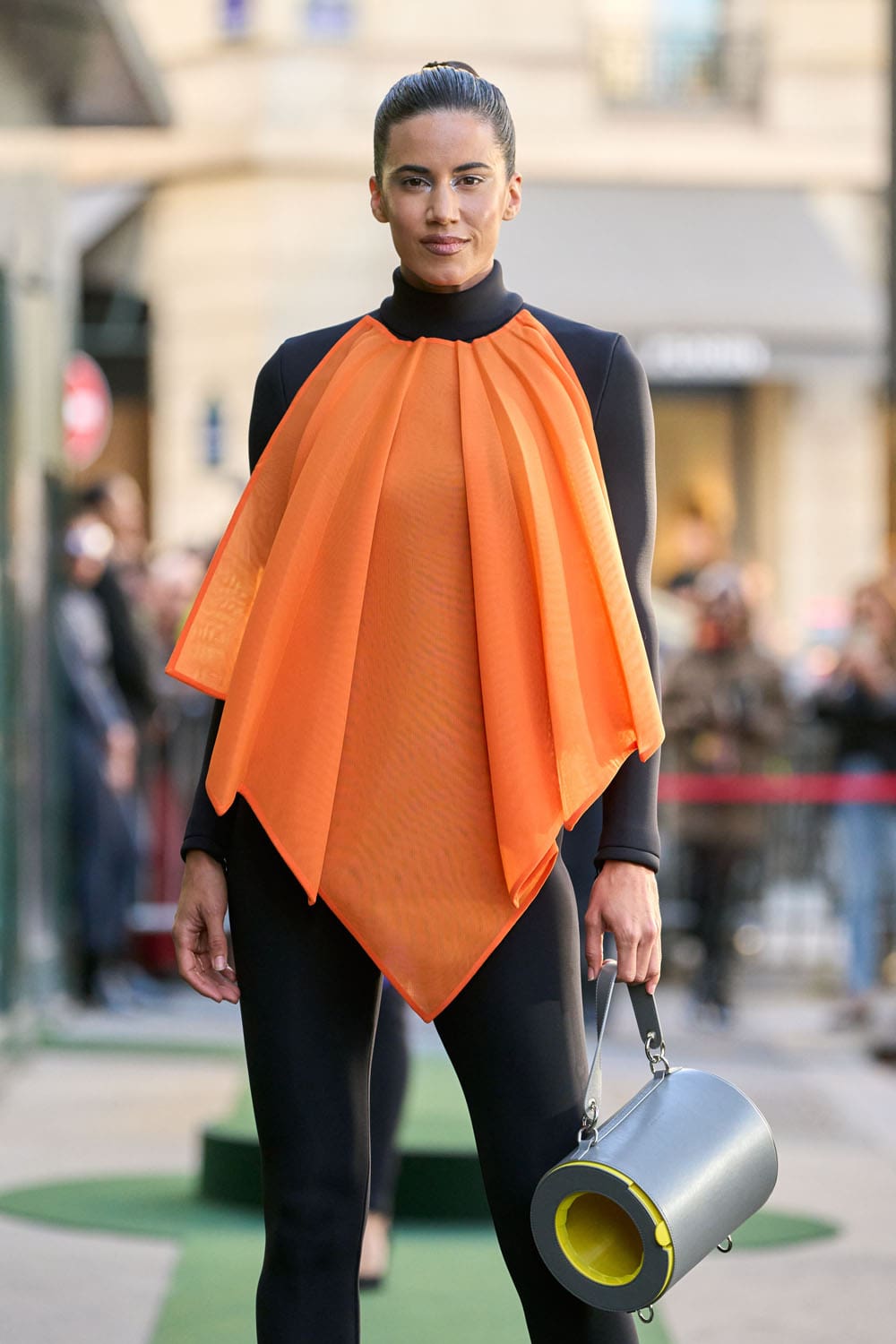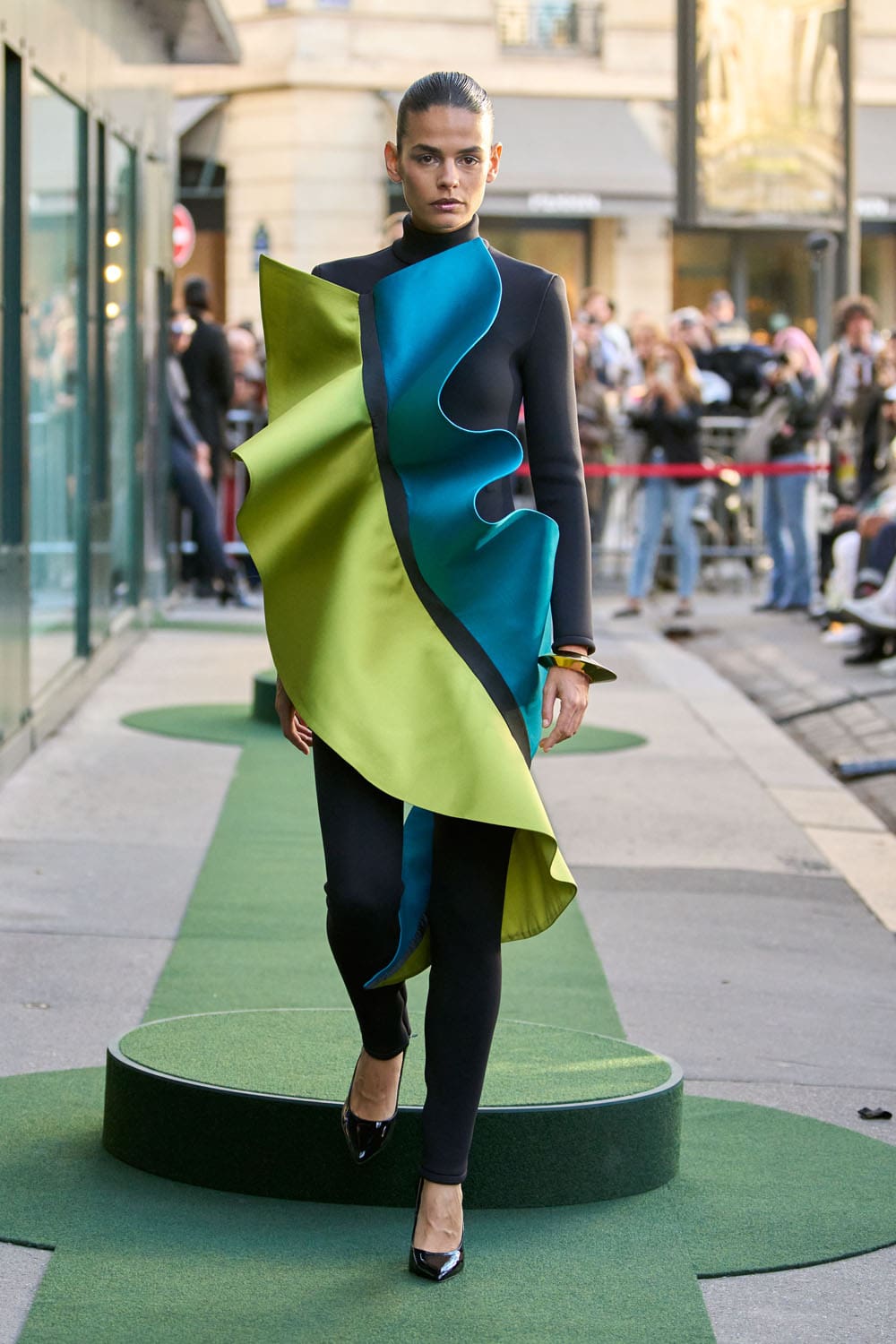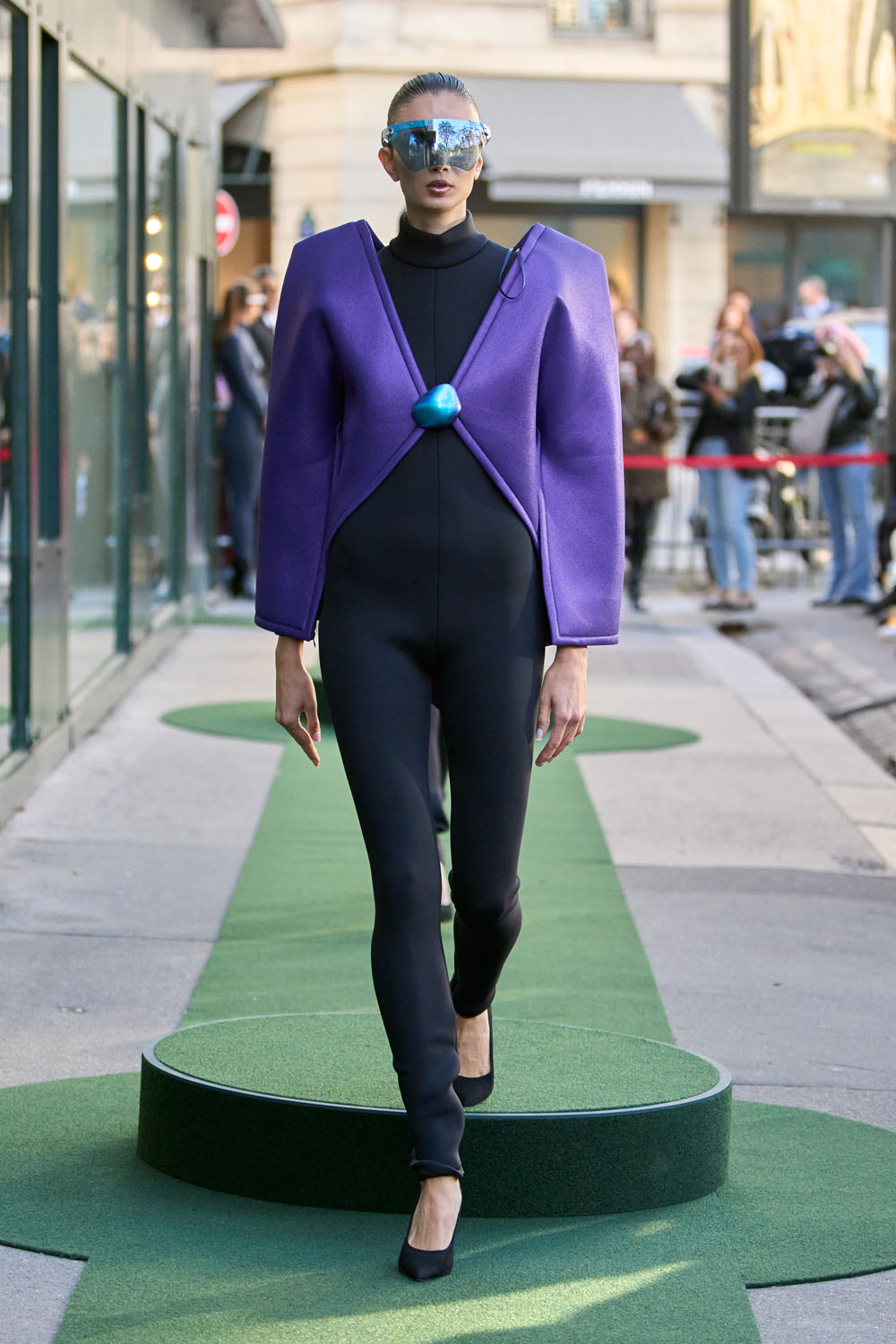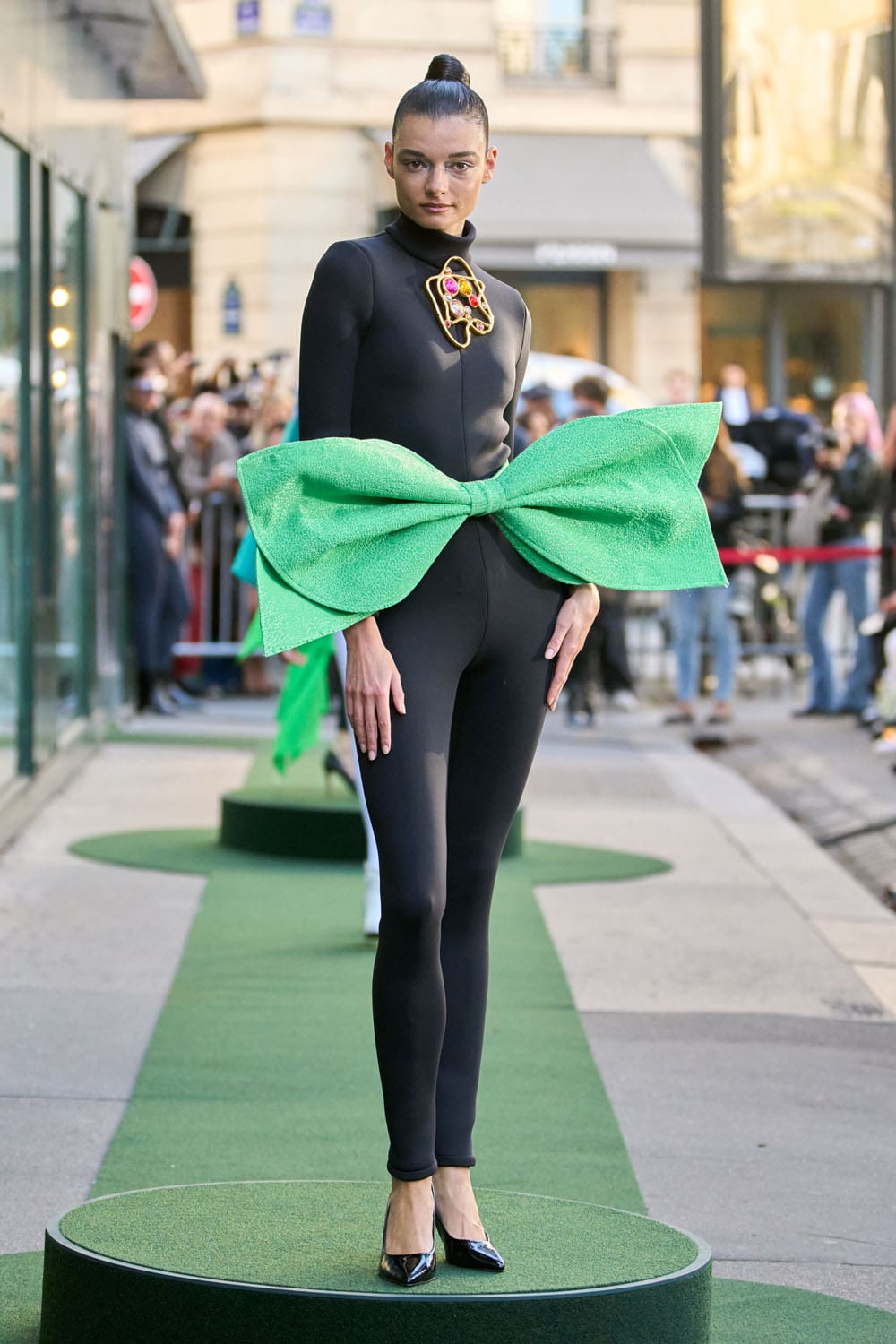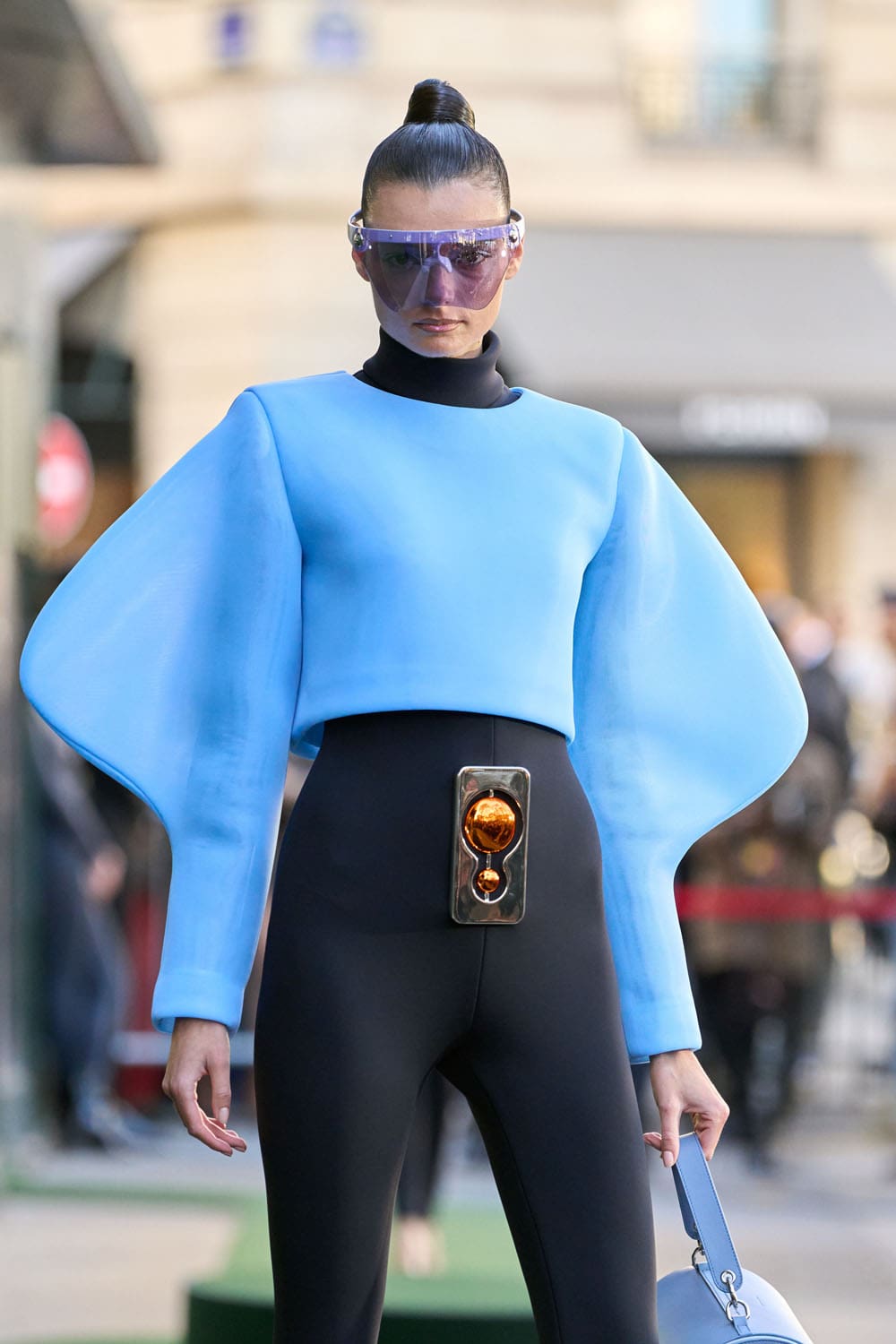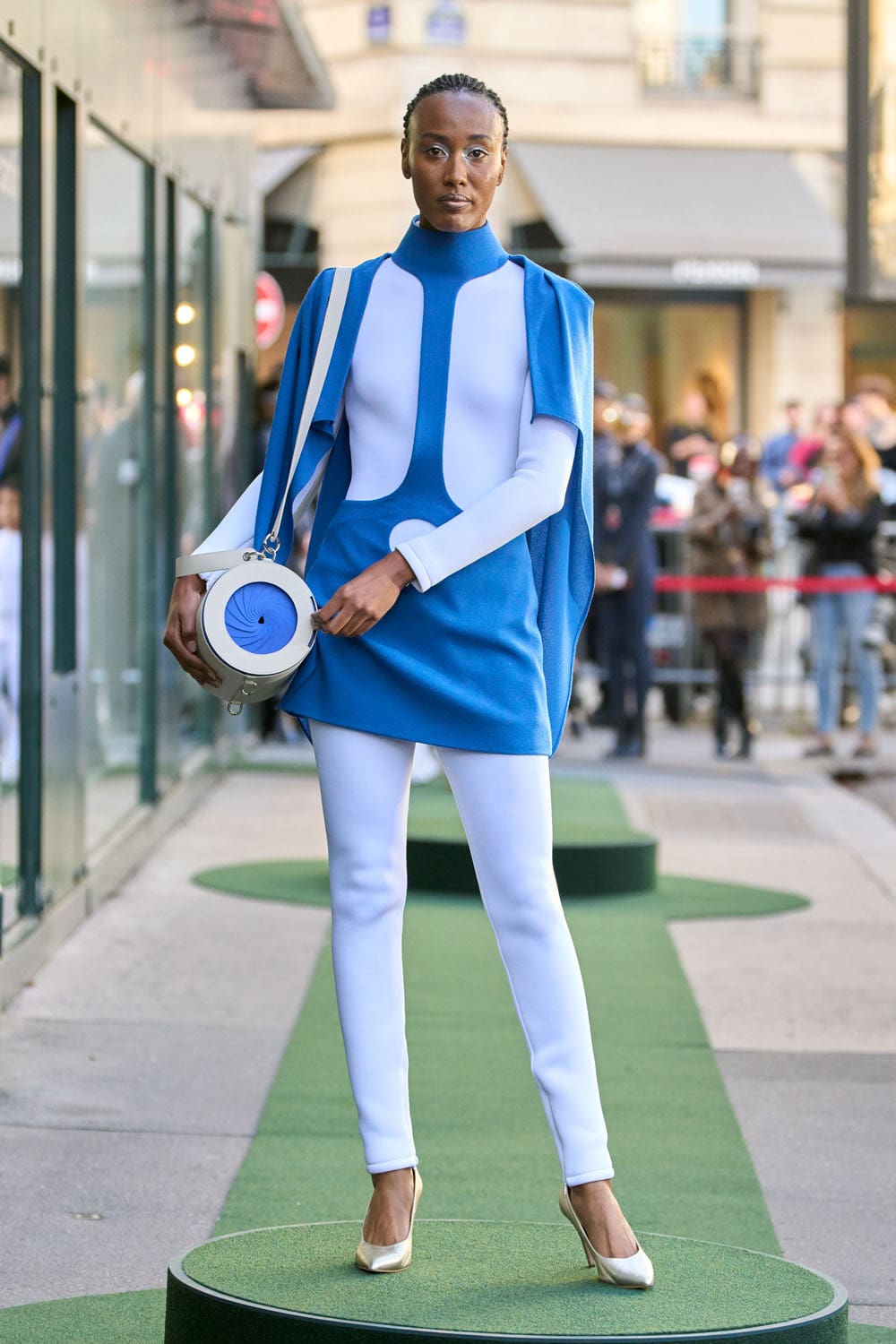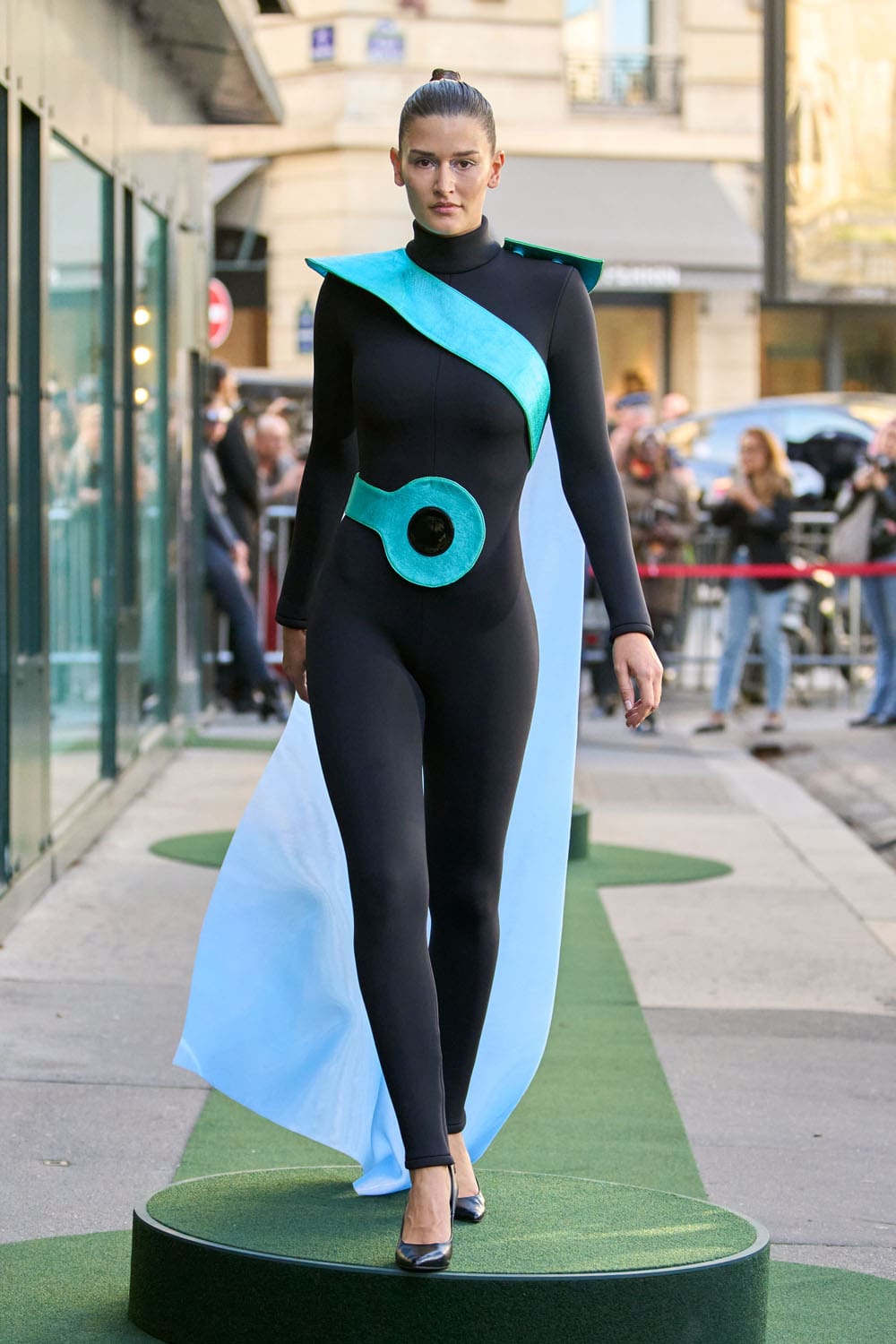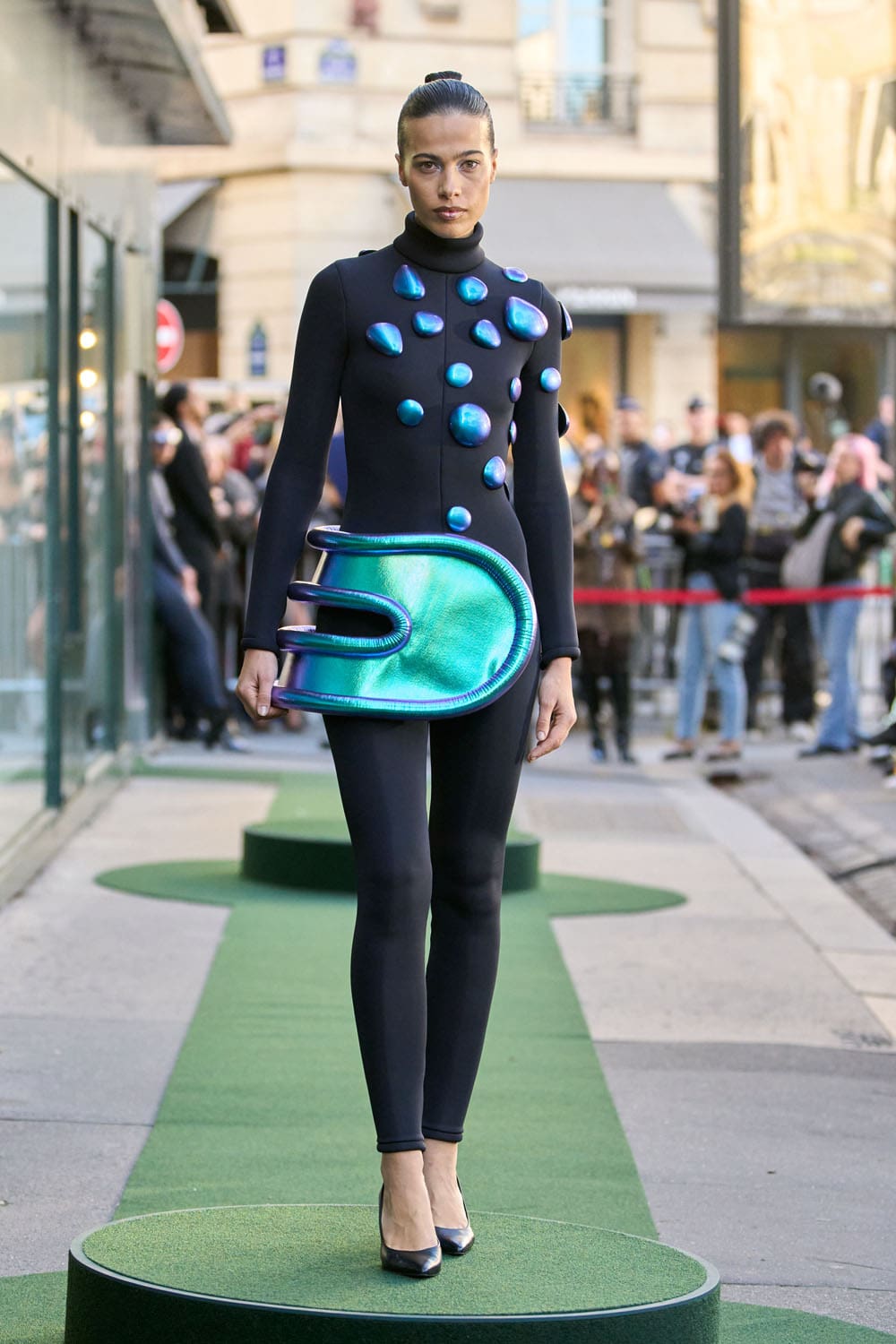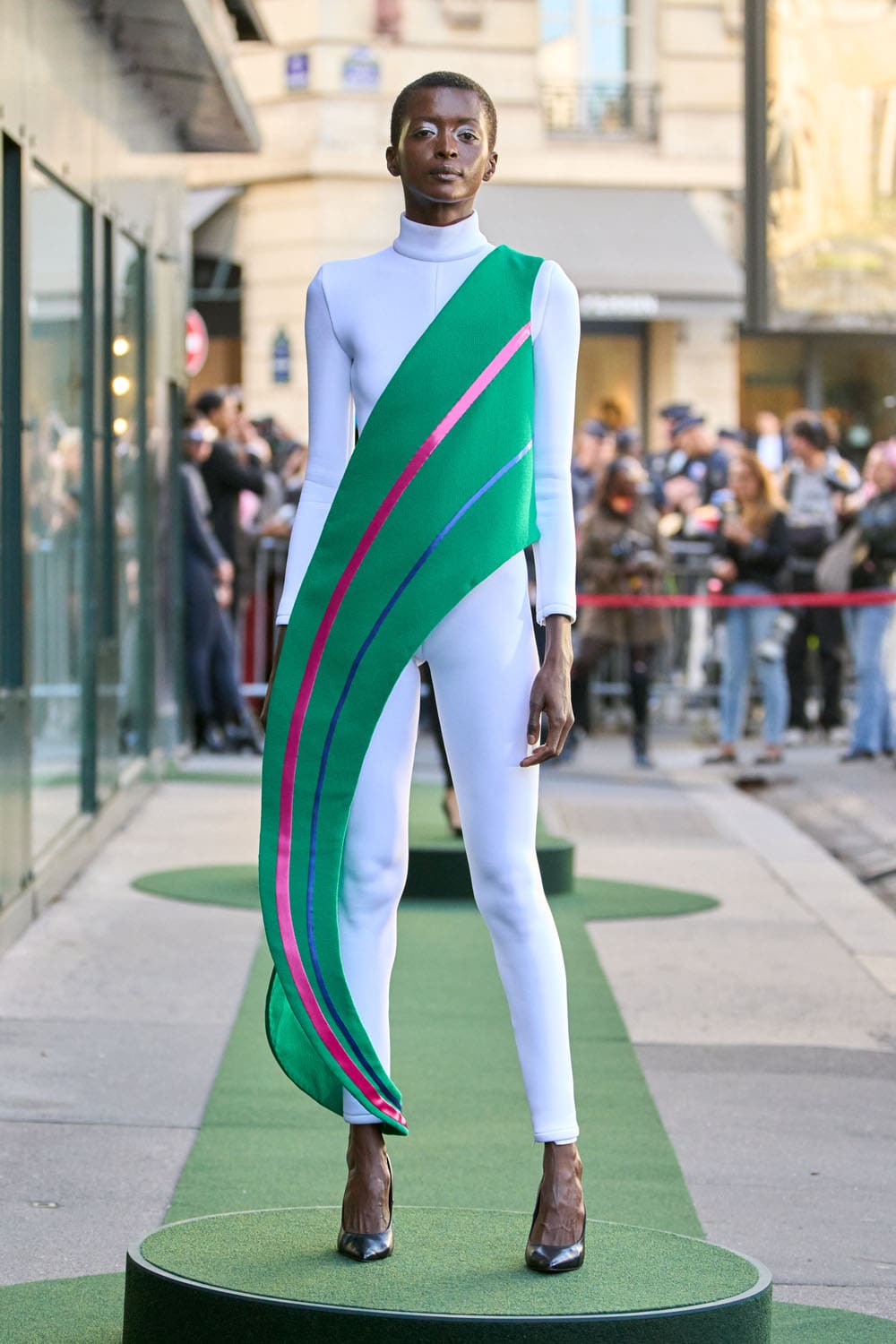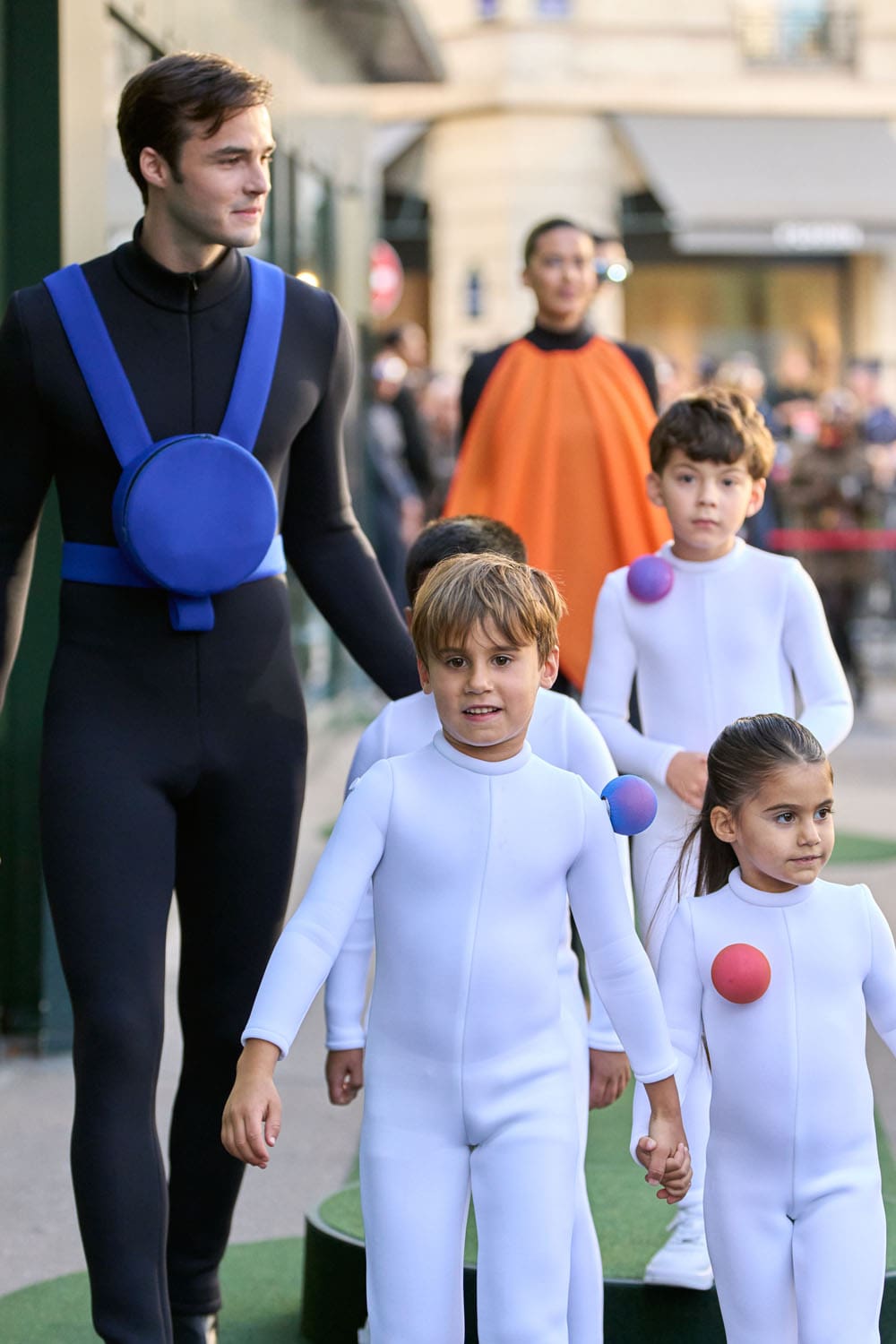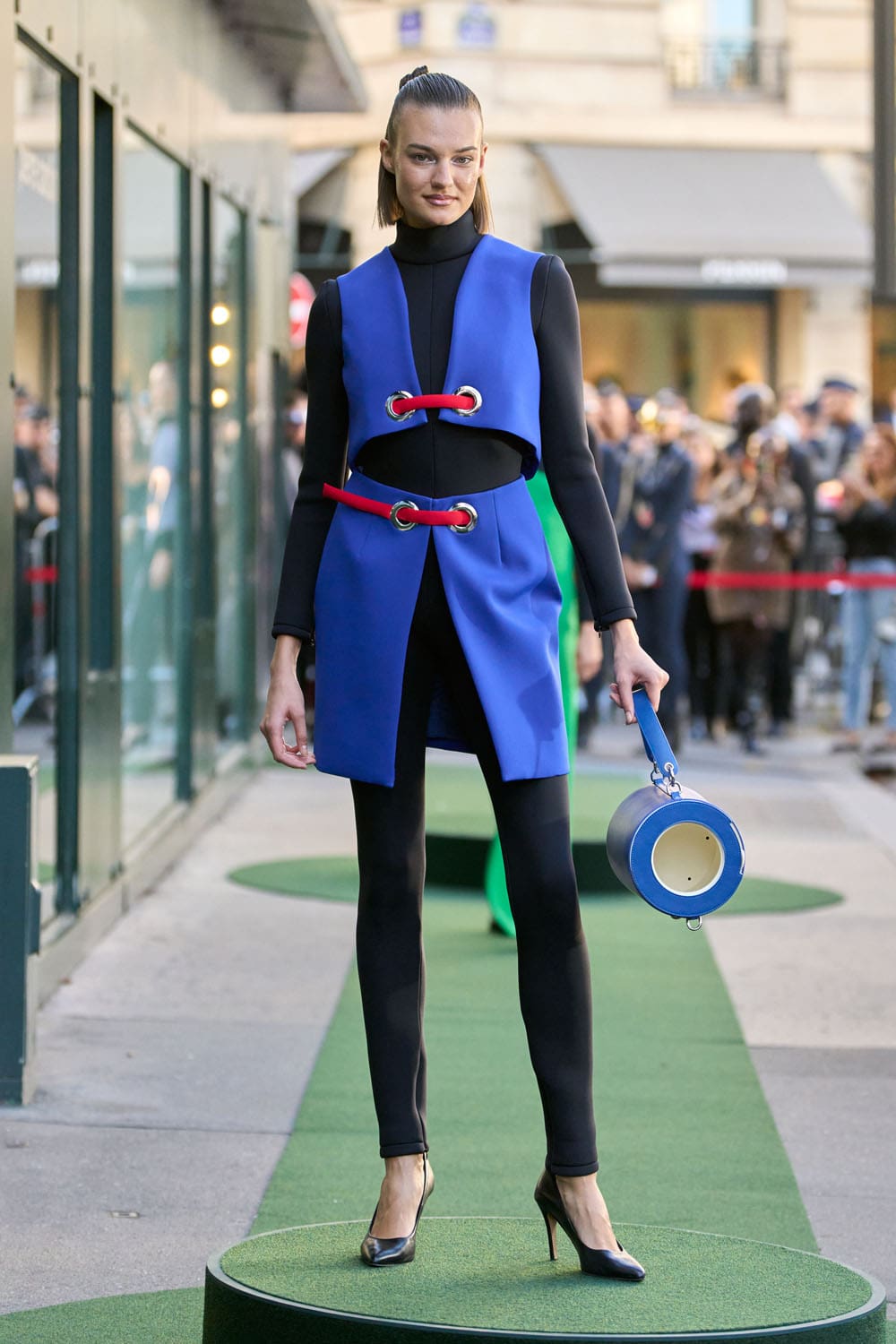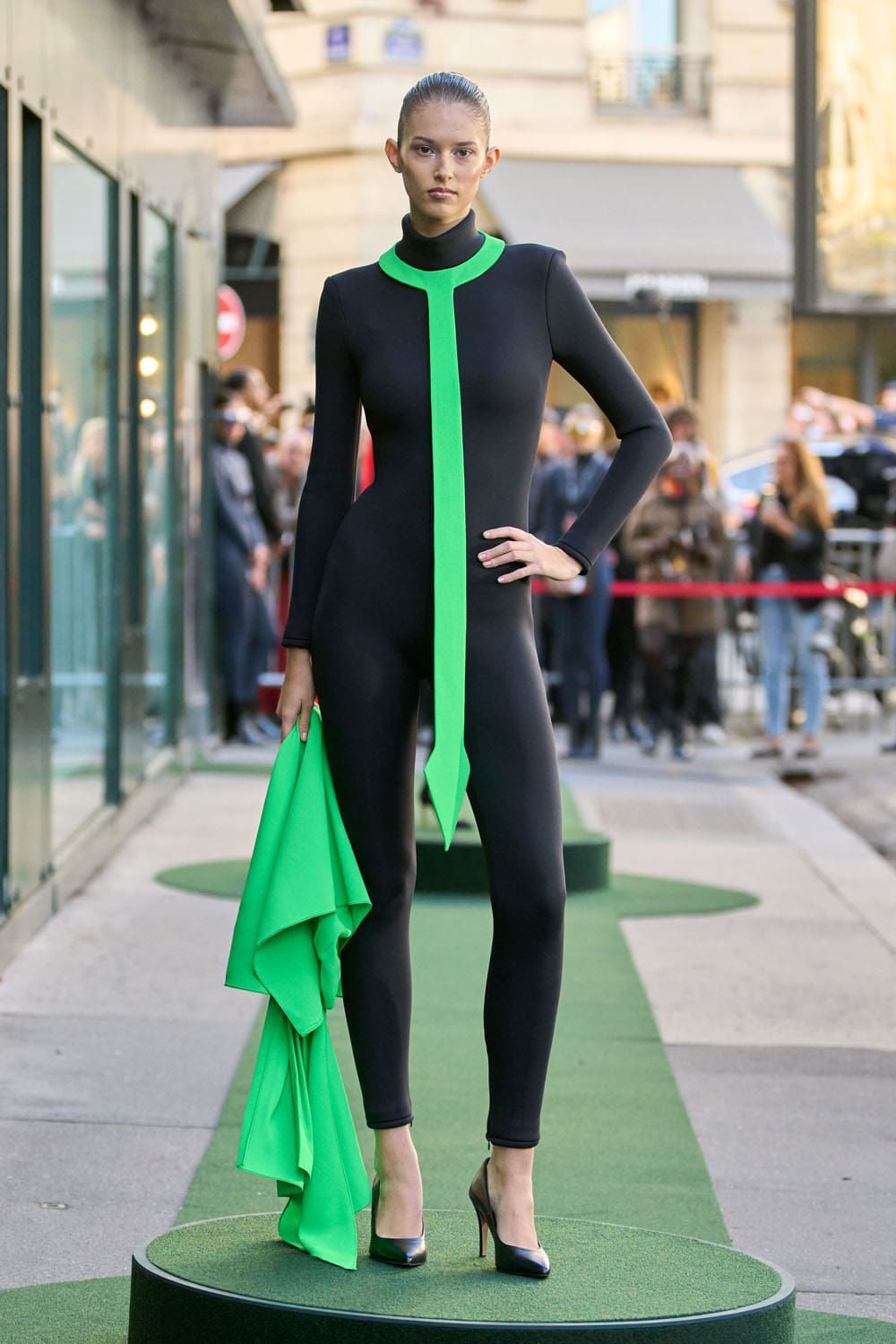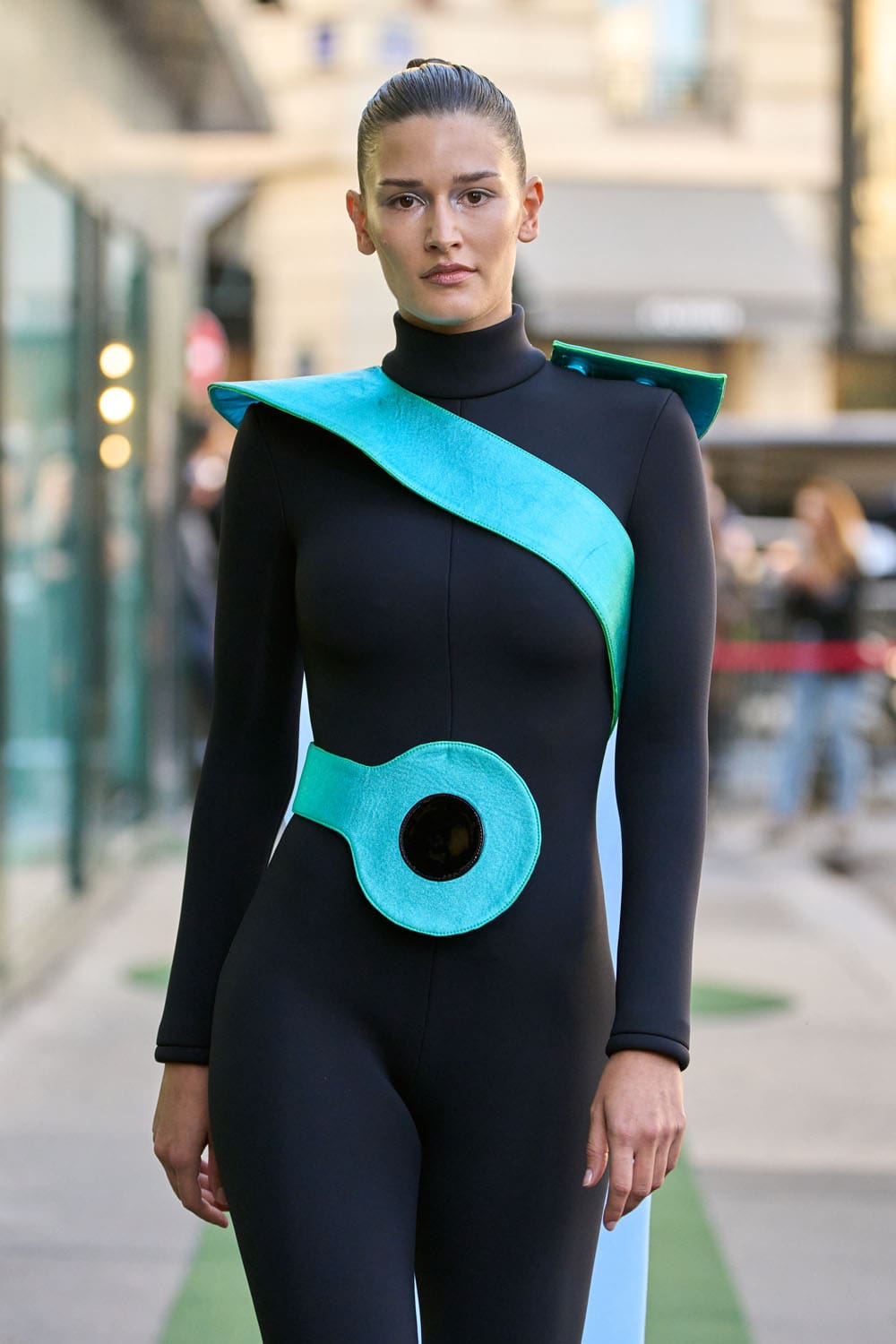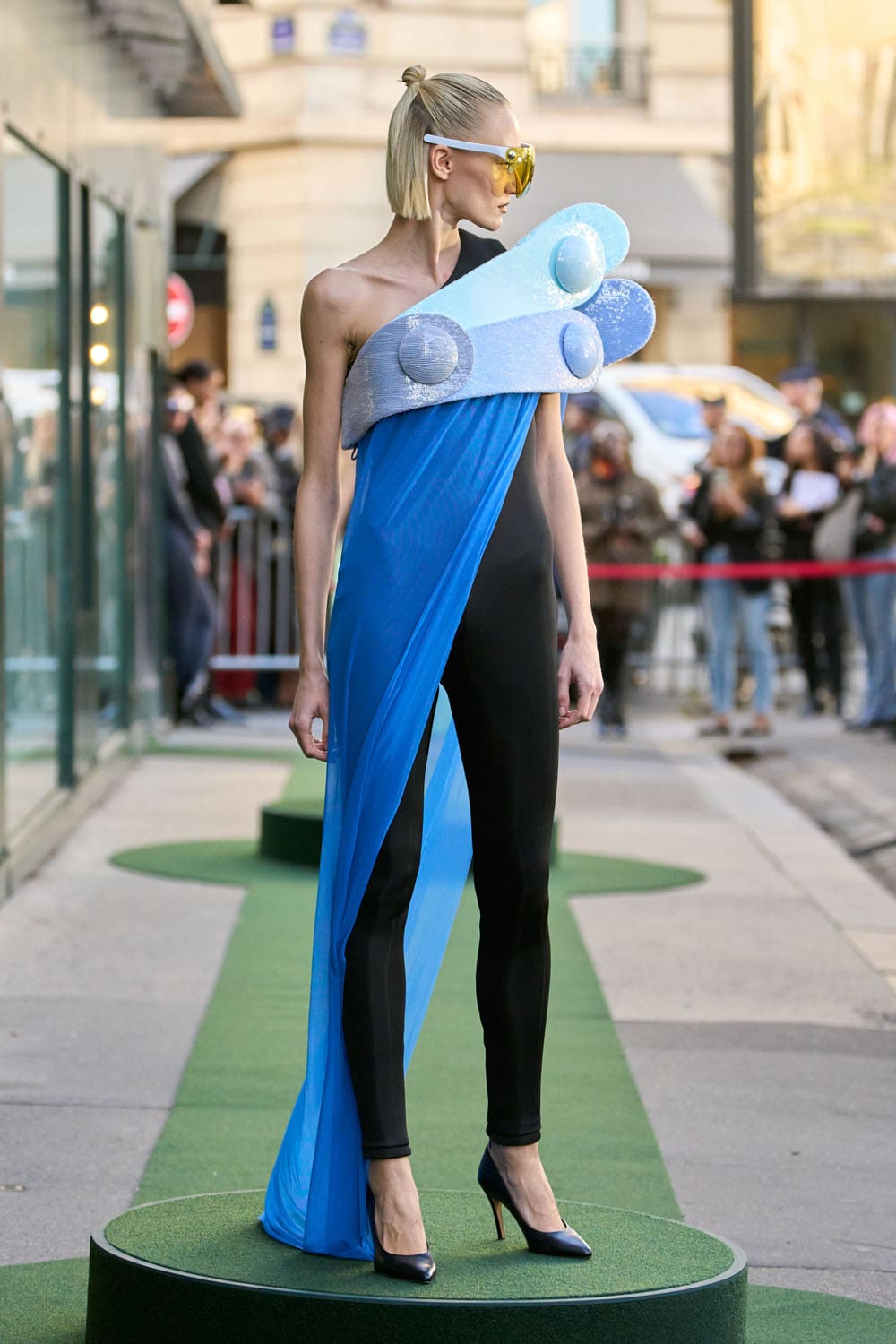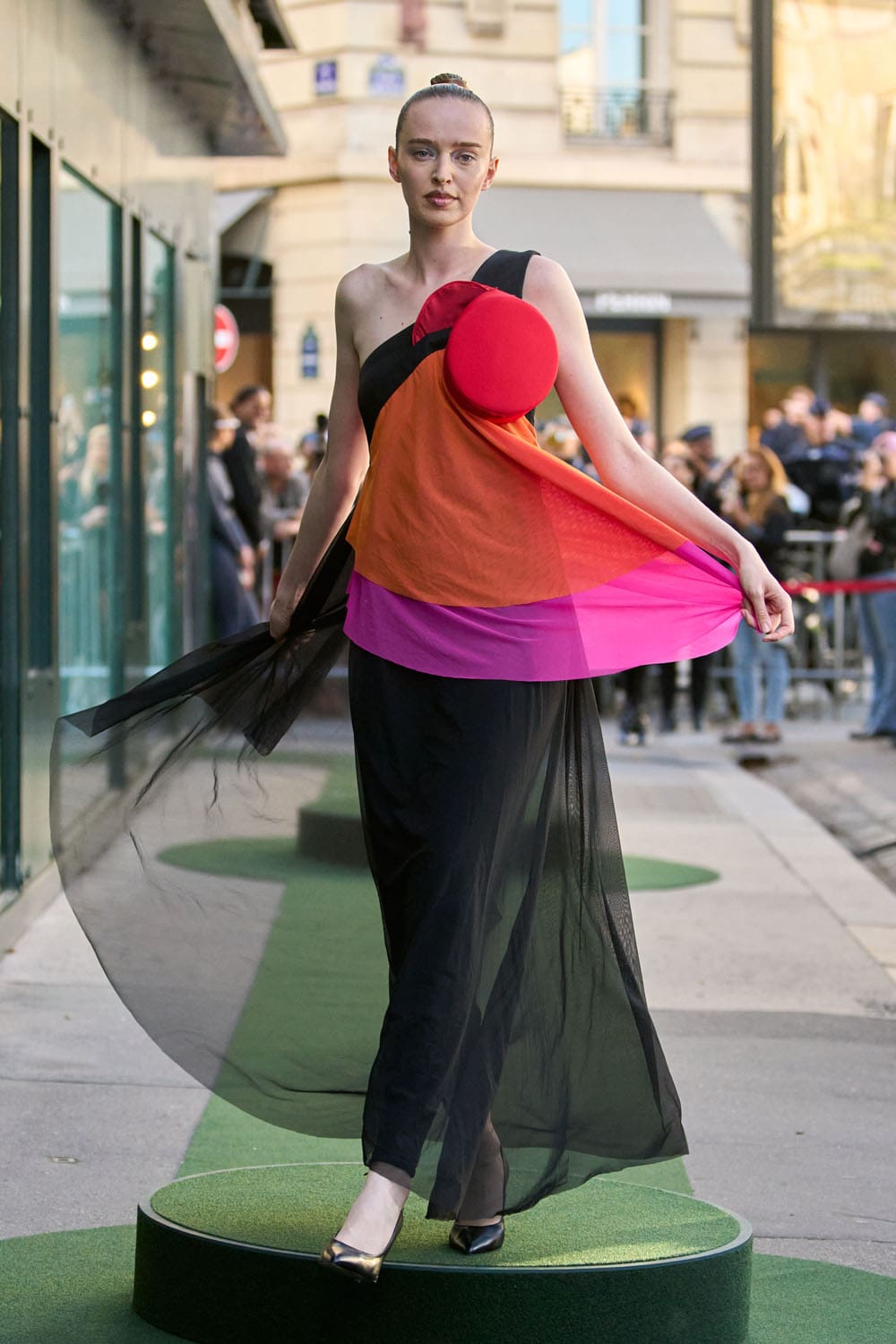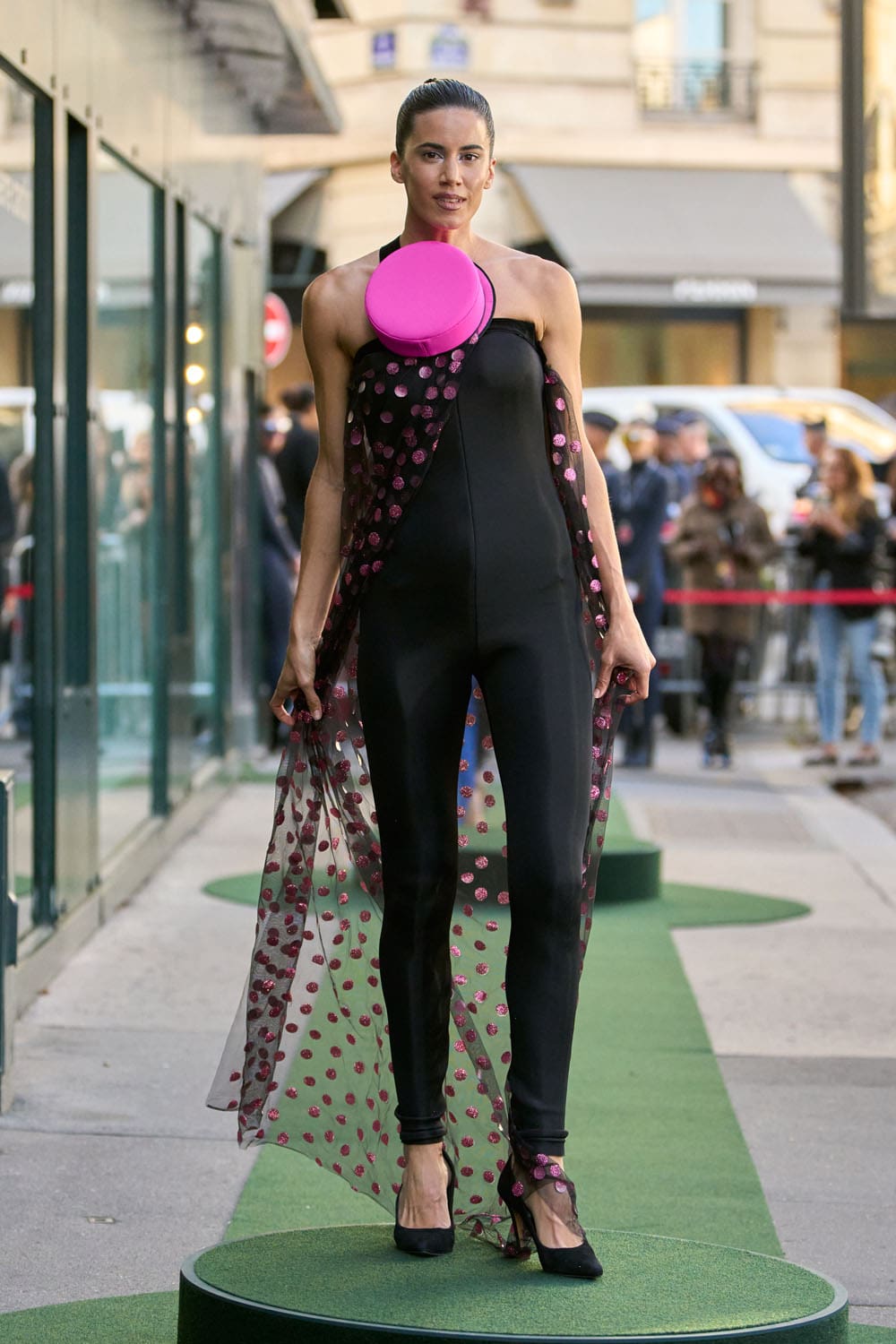Pierre Cardin Spring Summer 2026 “The Art of Modular Couture”. Story by Eleonora de Gray, Editor-in-Chief of RUNWAY MAGAZINE. Photo Courtesy: Pierre Cardin.
“We project with optimism towards a future in which we will harmonize with nature, humbly and intelligently without wasting its resources.”
At 59, rue du Faubourg Saint-Honoré — an address synonymous with the Pierre Cardin legacy — something extraordinary unfolded this season. A fashion show that didn’t just showcase garments but redefined the very idea of what clothing could be. In celebration of 59 years at this historic address, 59 looks were unveiled — each one a proposal for how fashion might evolve to serve not only style, but sustainability, adaptability, and intelligence.
The Future has arrived
The most surprising and captivating moment came before the show officially began. Models appeared in pure black bodysuits, sleek and silent — walking architecture, waiting to be transformed. At first glance, it seemed minimalist, even stark. But then, the transformation began.
Colorful sculptural elements — turquoise belts, fluid capes, iridescent pods, sculptural wings — were added, repositioned, reimagined. These weren’t just accessories. These were modular extensions, designed to be moved, removed, or combined. With a single gesture, the entire silhouette could be redefined.
Imagine a jacket formed by two small, lightweight structures connected by a sheer fabric — now worn on the back, later twisted into a shoulder wrap. With every shift, the silhouette changed. A fluid, wearable puzzle — architectural yet sensual.
This system of moving parts is more than aesthetic play. It reflects a contemporary, ecologically intelligent design strategy: less waste, more versatility. Fewer garments, infinitely more possibilities.
Key Looks
One of the first looks is the stark geometry of a matte black bodysuit — deceptively minimal until the eye caught the glimmer of sculpted pods clinging to the body like liquid armor. These iridescent forms, blue and green with beetle-shell intensity, weren’t ornamental. They pulsed with purpose, turning the body into a topography of movement and tension. Anchoring the look: a bold, inflated metallic hip element — half shield, half wearable architecture.
Elsewhere, an asymmetrical slash of turquoise velvet cut across the chest, looping around the waist like a diagram of motion. Its soft curve met a black bodysuit in quiet defiance — not a harness, not a belt, but something in between. In motion, it became kinetic sculpture, suggesting the wearer was built for atmosphere, not gravity.
A shoulder veil of blue chiffon drifted from a gleaming sculptural bust, dissolving into transparency with every step. Worn with bold yellow-tinted eyewear, the look oscillated between celestial high priestess and soft-tech warrior — the kind of woman who reprograms the elements with a gesture.
And then came the collision of aerodynamic color: blade-like fins in neon pink and acid yellow erupted from the hips of an otherwise simple bodysuit. They sliced through the air with brutal elegance, echoing the shapes of abstract fauna or underwater propulsion systems. What looked playful at first was, in fact, sharply calculated.
Sculptural excess found its peak in a fuchsia vision — structured arcs of padded textile curled around the shoulders and hips like the petals of an alien bloom. Voluminous yet engineered, the silhouette dared space to make room.
One design turned the body into a molecule — a constellation of golden spheres extending from every axis, recalling both scientific models and ritual adornment. The suit became a field of energy, alive with data and desire.
And floating across the runway, a cropped cape in turquoise hovered just above the chest, secured only by tension and precision. Long trailing extensions danced behind the model like calligraphic strokes in motion — not fabric, but thought materialized.
Closing the sequence, a layered fuchsia sheath hovered over a white bodysuit, sliced open in fluid curves that recalled coral, circuitry, or the wings of a future butterfly. Futurism, here, was not cold. It was soft, feminine, and filled with breath.
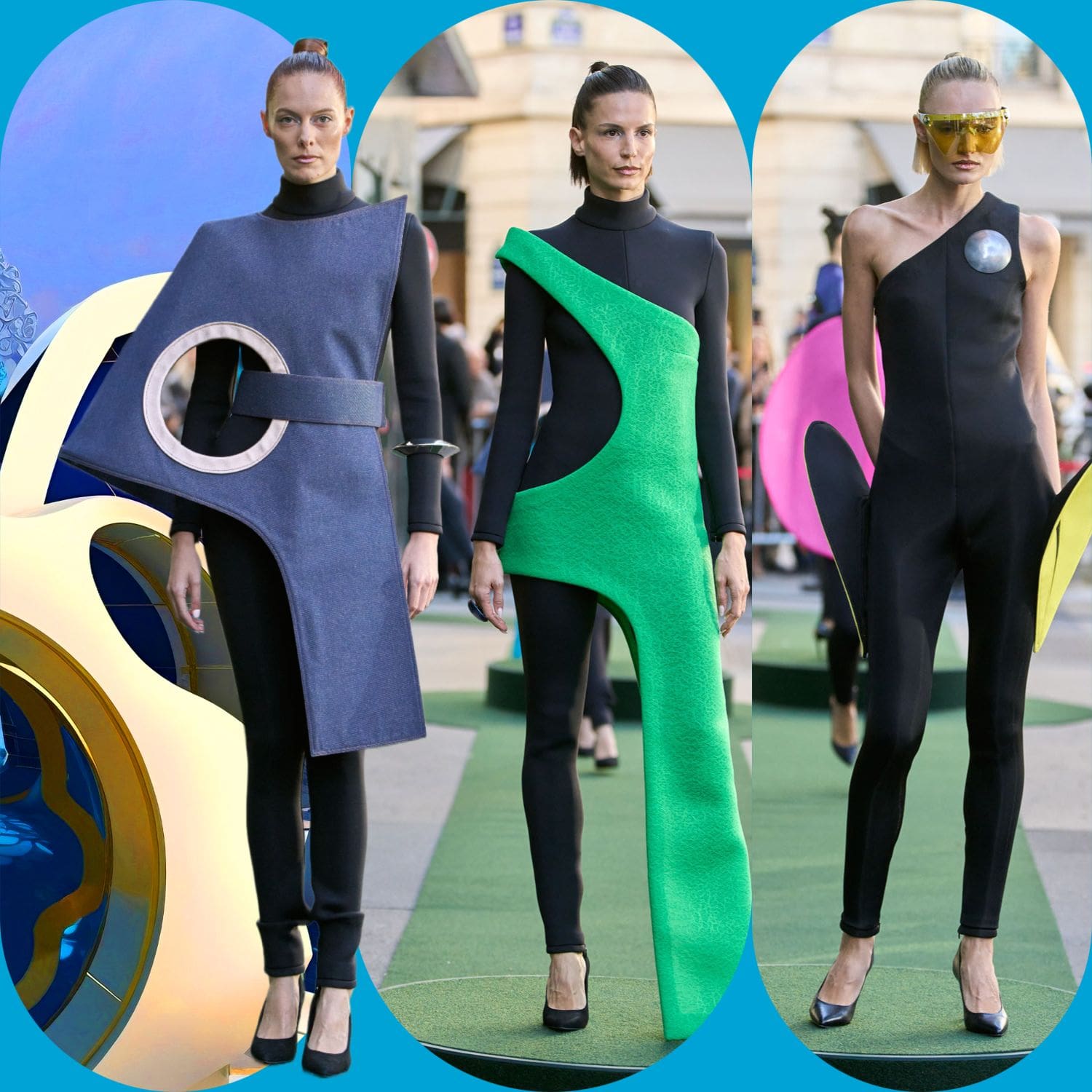
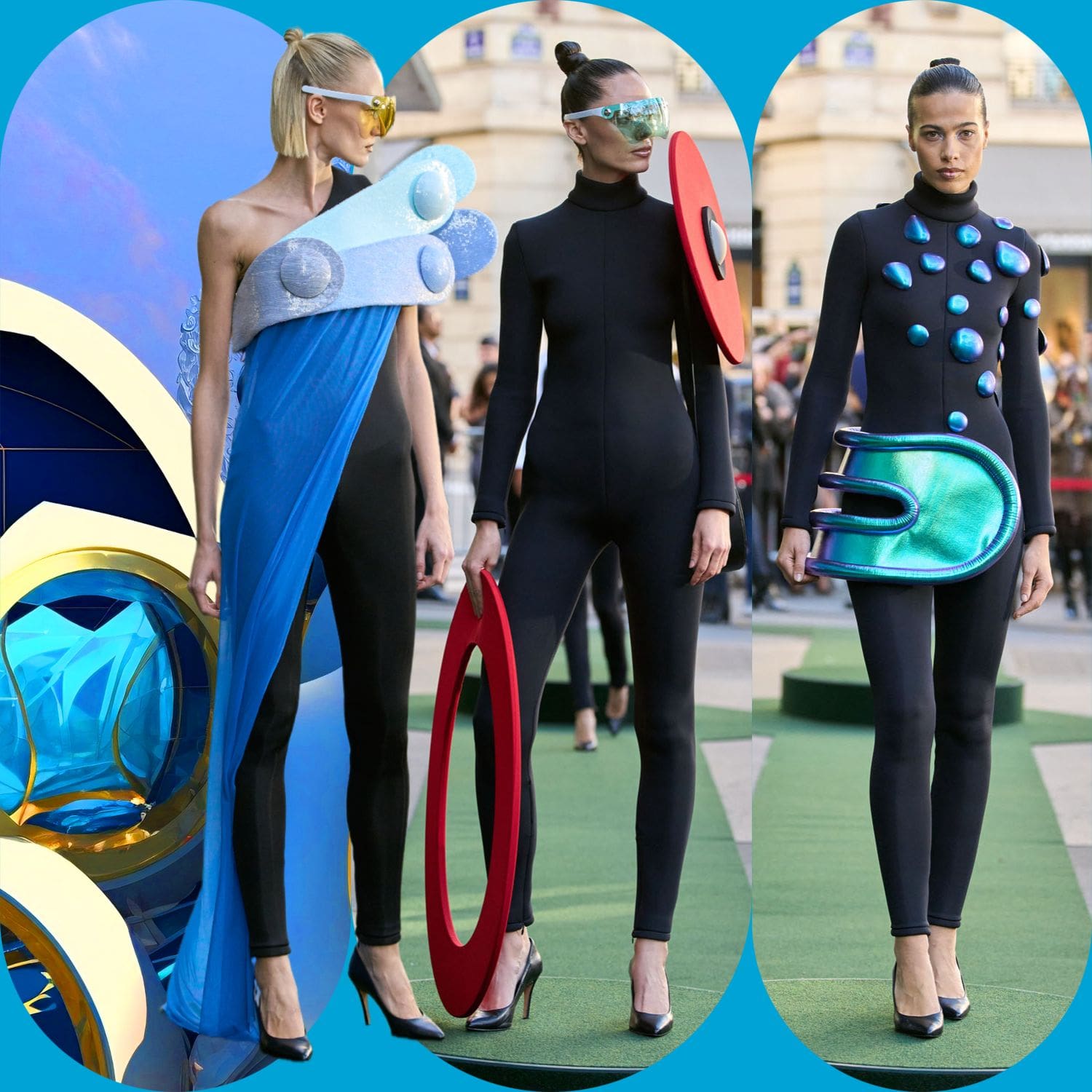
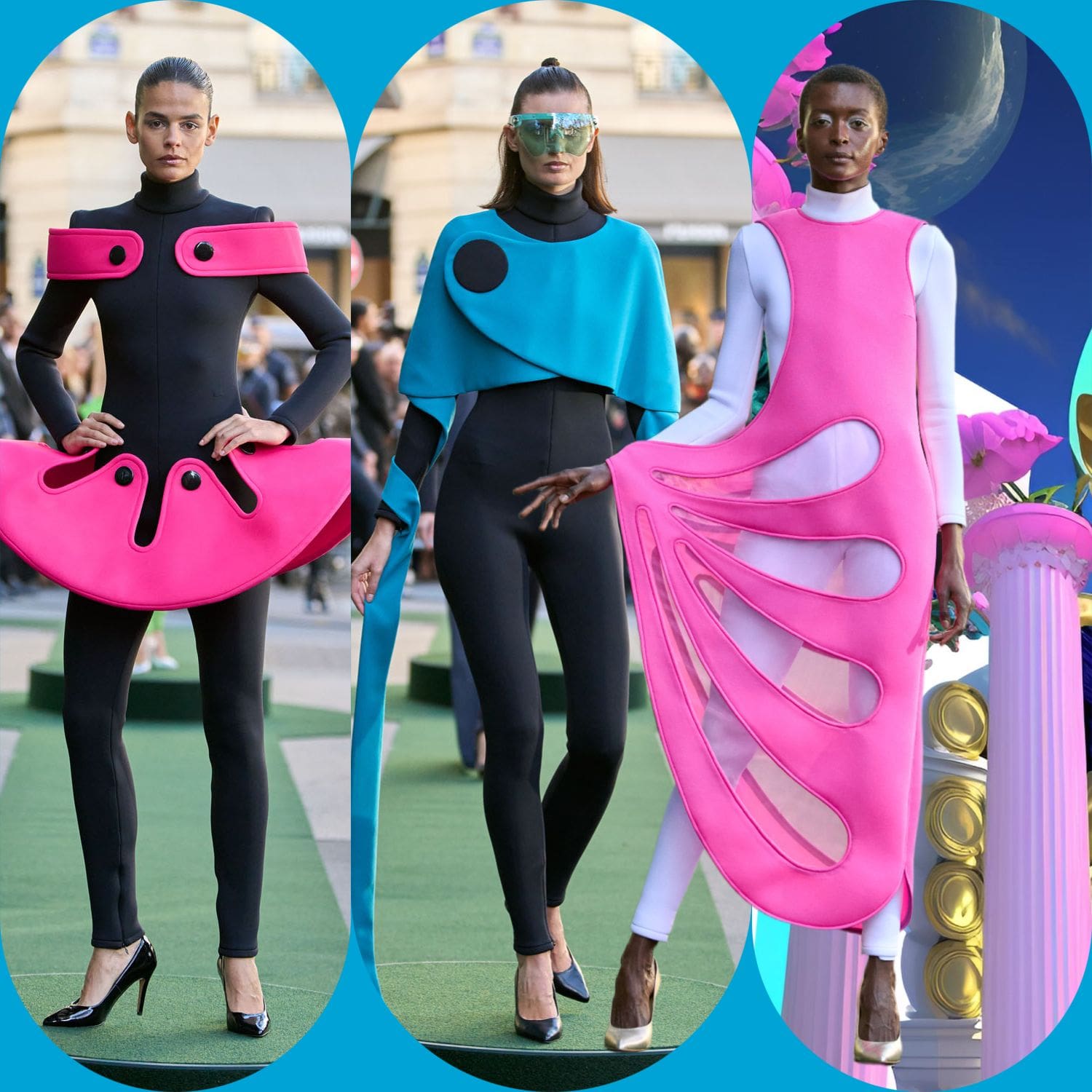
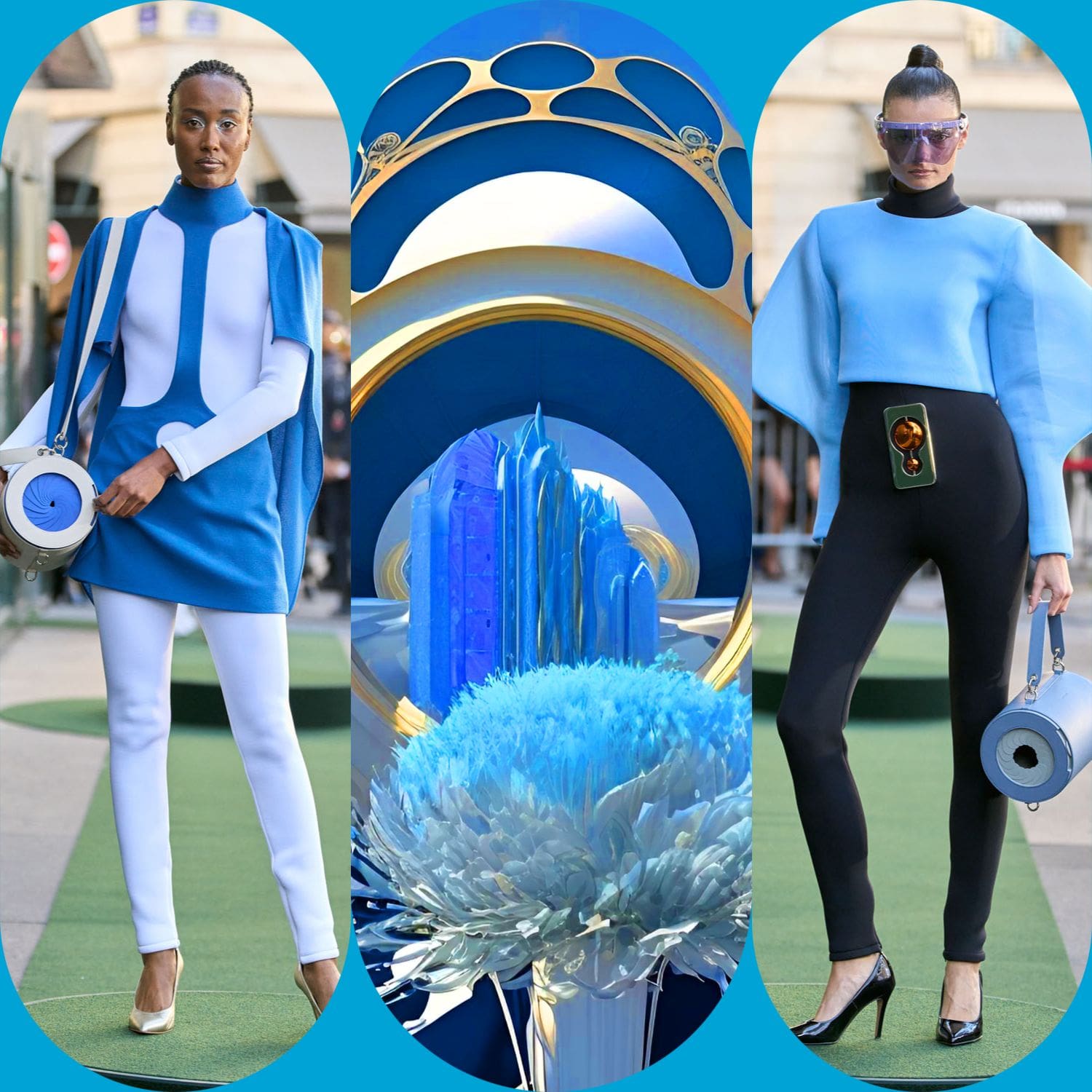
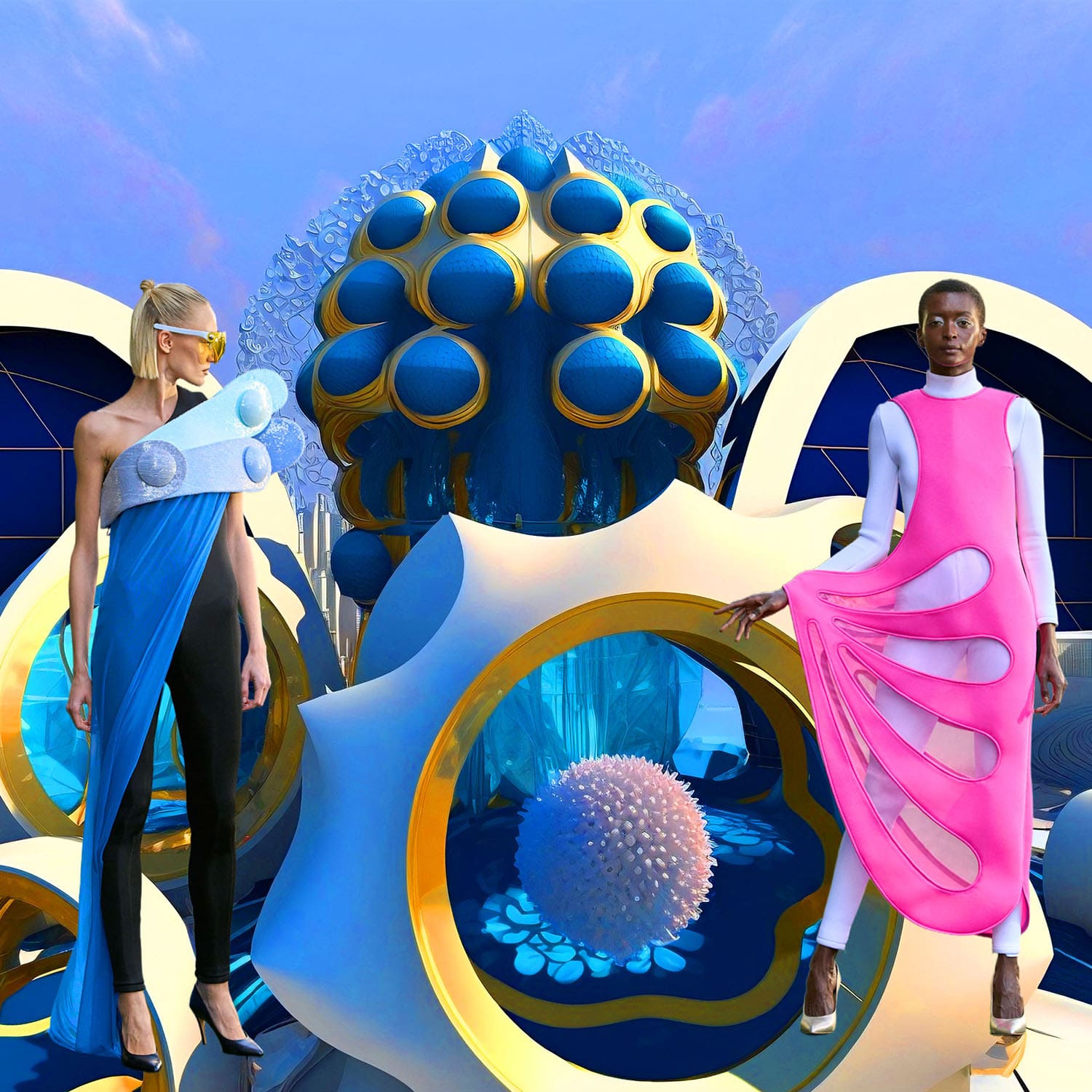
A Wardrobe That Thinks, Moves, and Responds
This isn’t just about visuals. The collection introduces smart textiles capable of regulating body temperature — warming or cooling based on the environment. Some garments include integrated mechanical systems and technical accessories, giving each look an operative potential.
A portion of the collection is composed of “quick-wear accessories” — wearable pieces made from existing stock fabrics, recycled fibers, and minimally transformed materials, reinforcing the ecological ethos.
The Garment as Companion
What we saw on this runway was not just fashion. It was a manifesto. The bodysuit became a canvas, the detachable elements a metaphor for fluid identity, conscious consumption, and the modularity of contemporary life.
Pierre Cardin’s Spring Summer 2026 collection is not a nostalgic homage to space-age aesthetics — it’s a reboot of the future, grounded in environmental realism and creative optimism.
In this vision, fashion becomes not only a medium of expression, but a partner in survival, an intelligent tool, and — most remarkably — an evolving, living form.
Rendez-vous au 59… where the future is already walking.
See All Looks Pierre Cardin Spring Summer 2026
